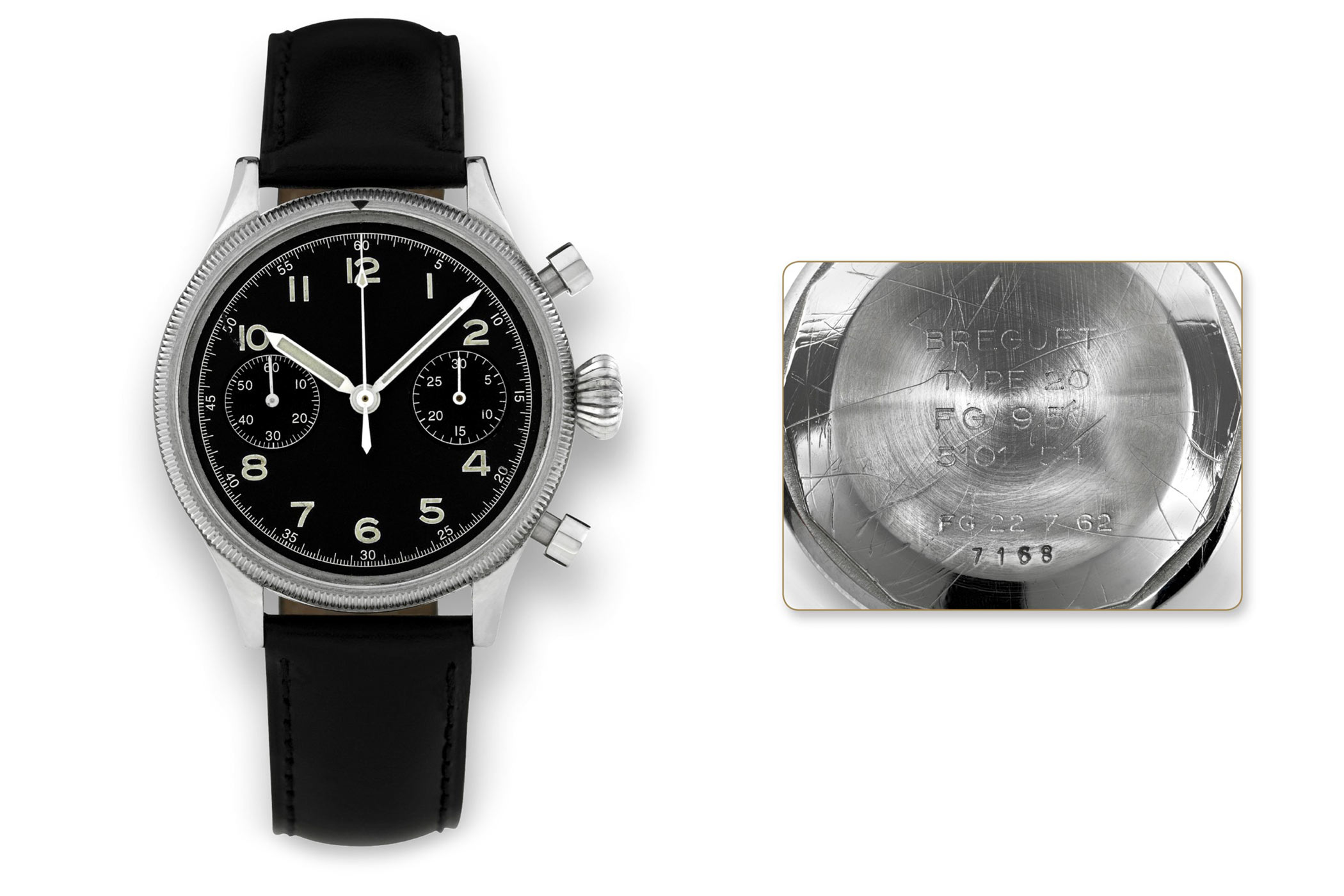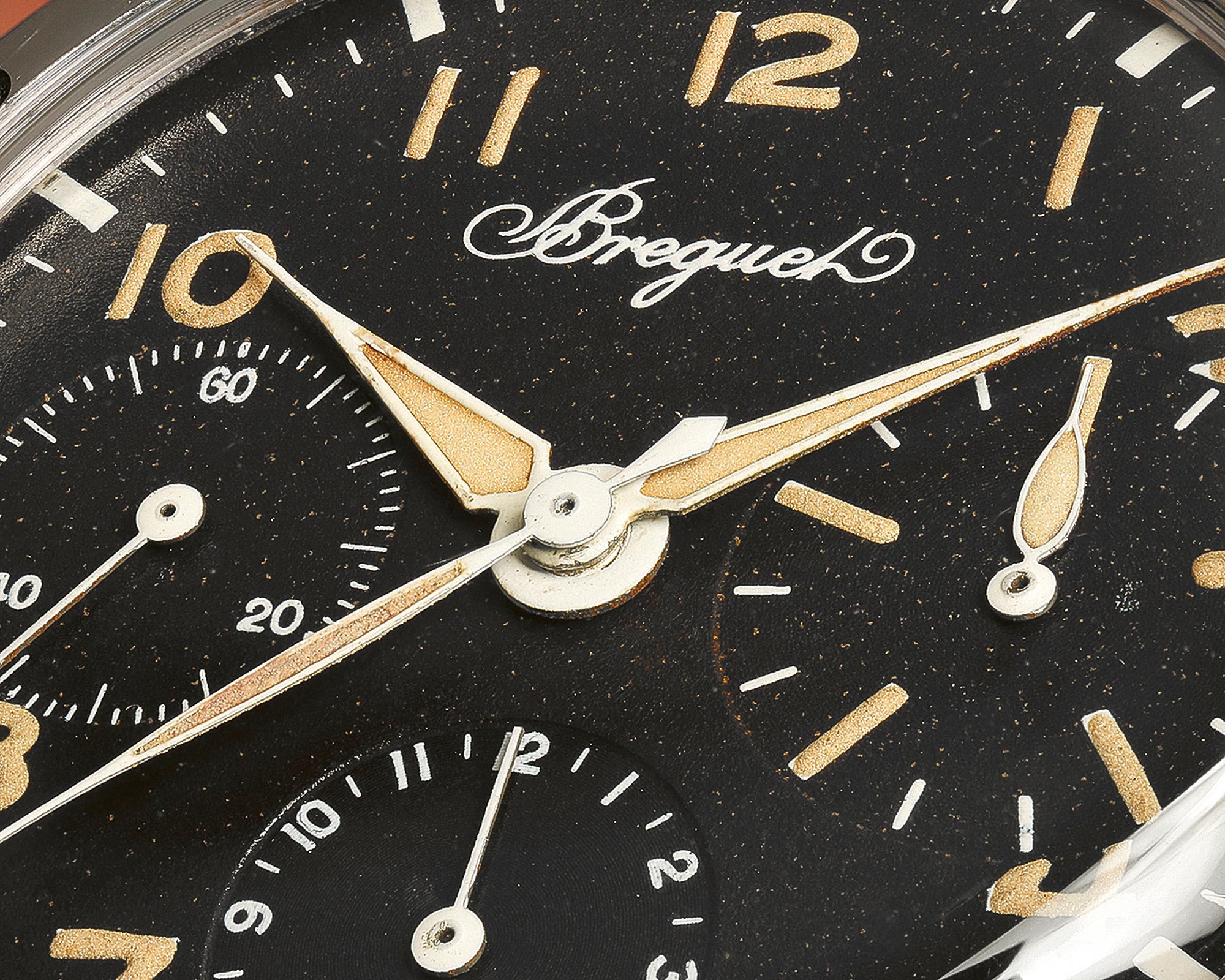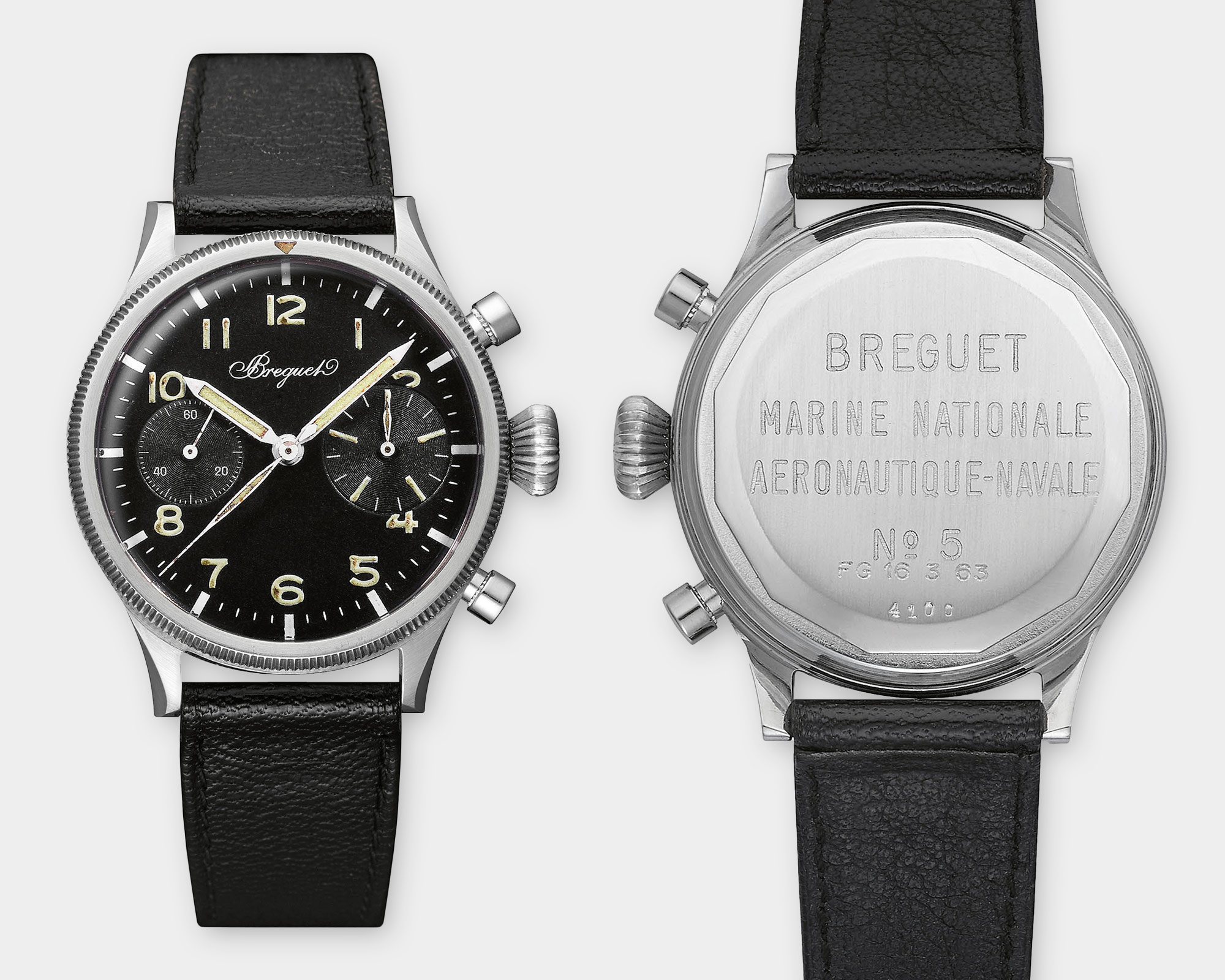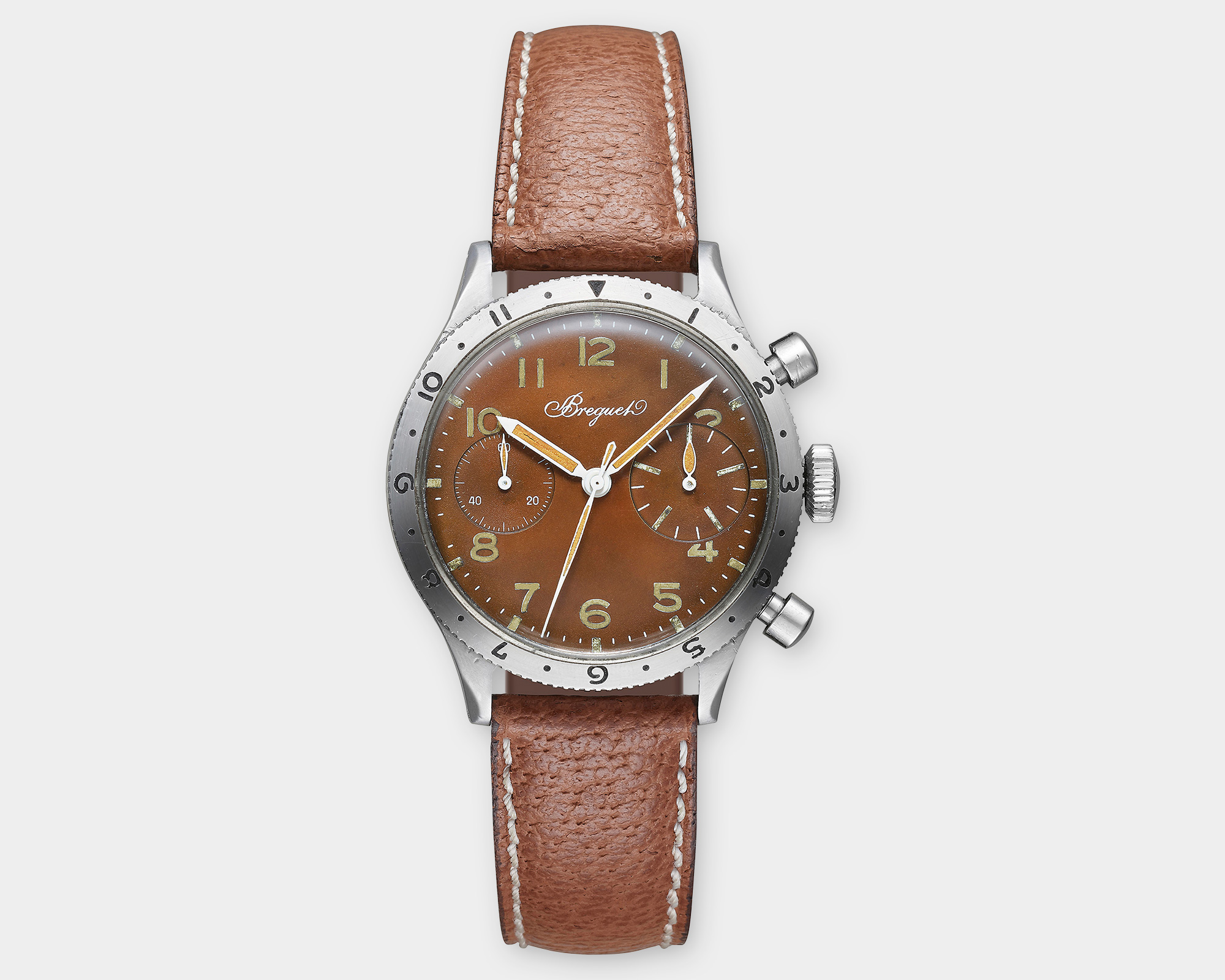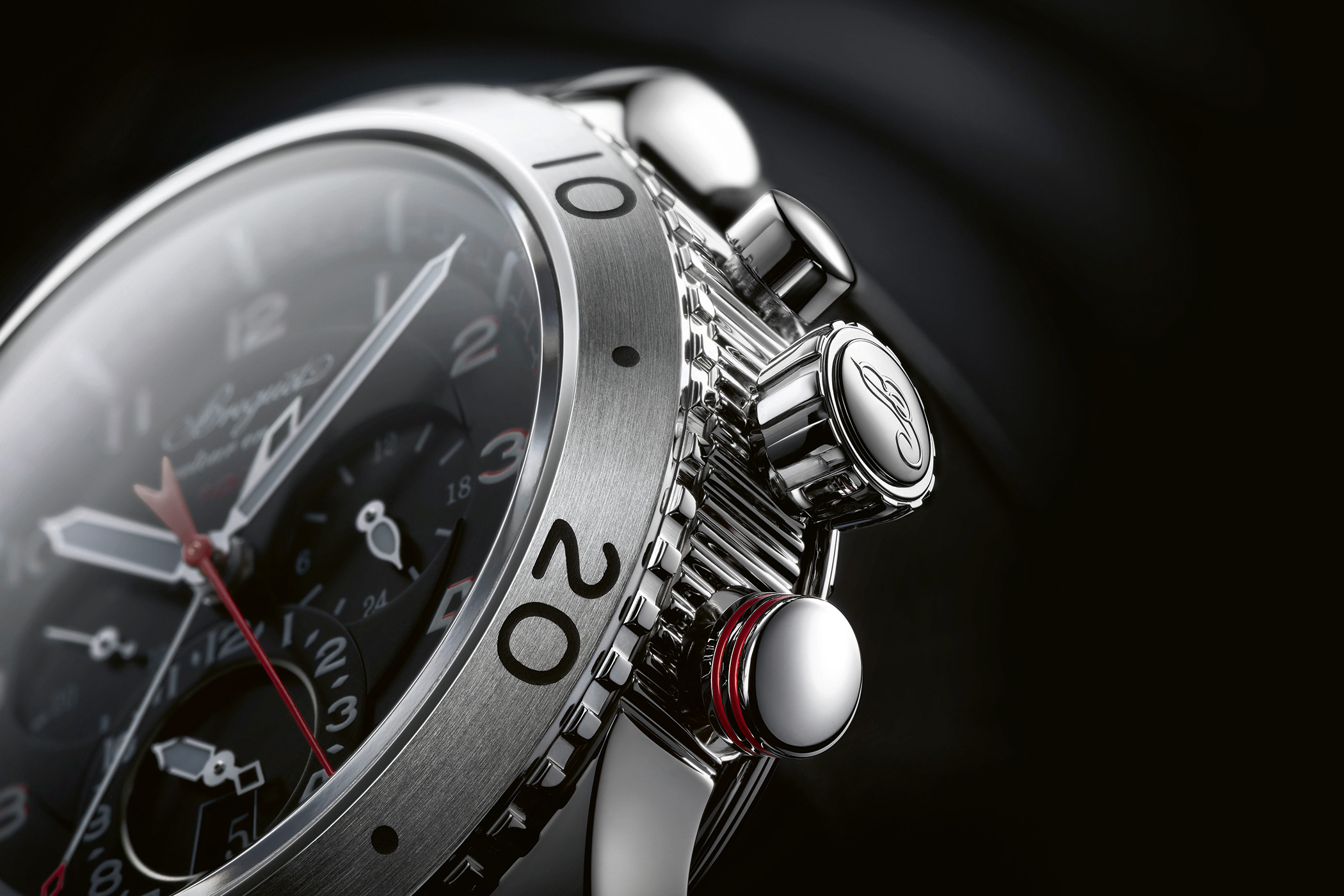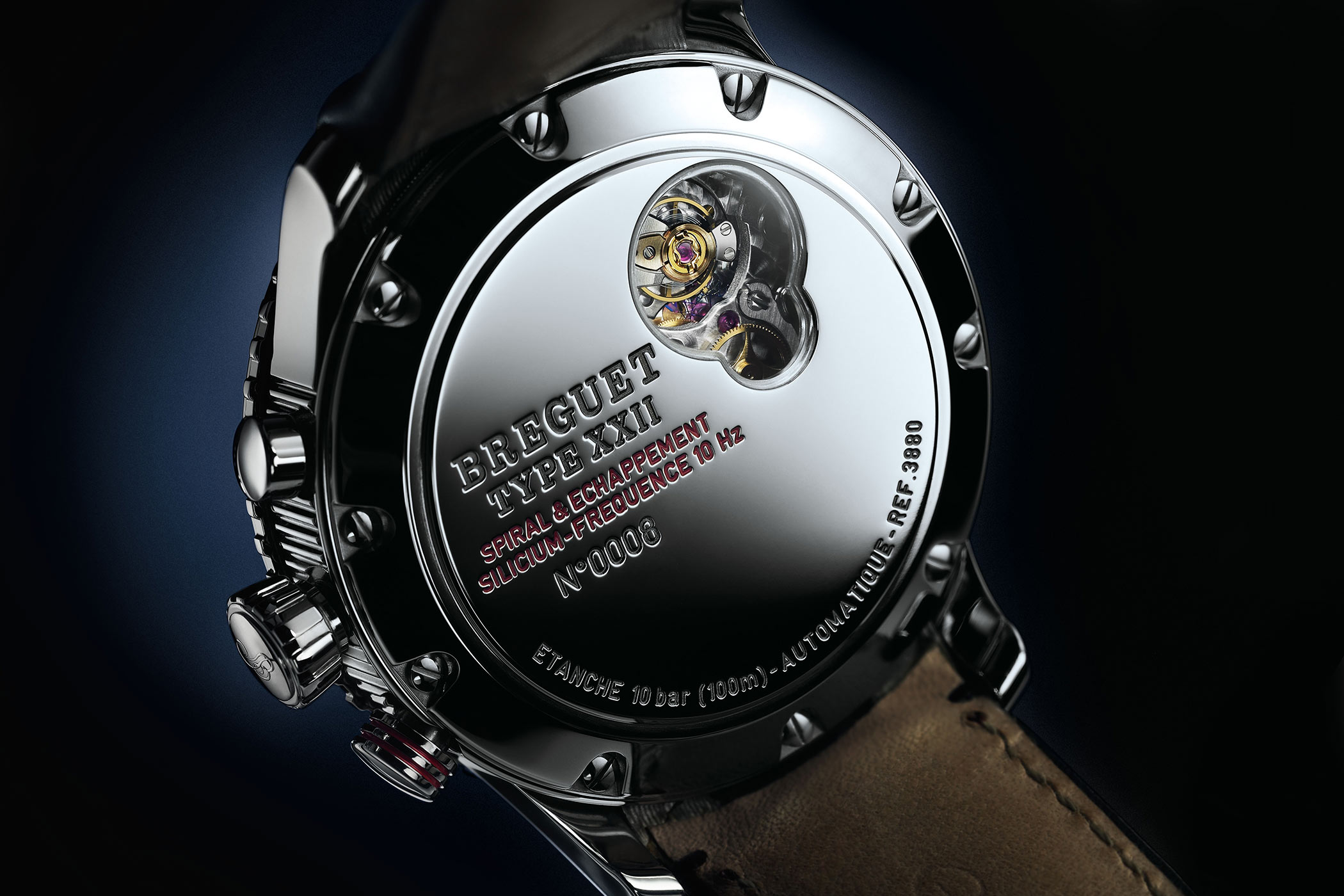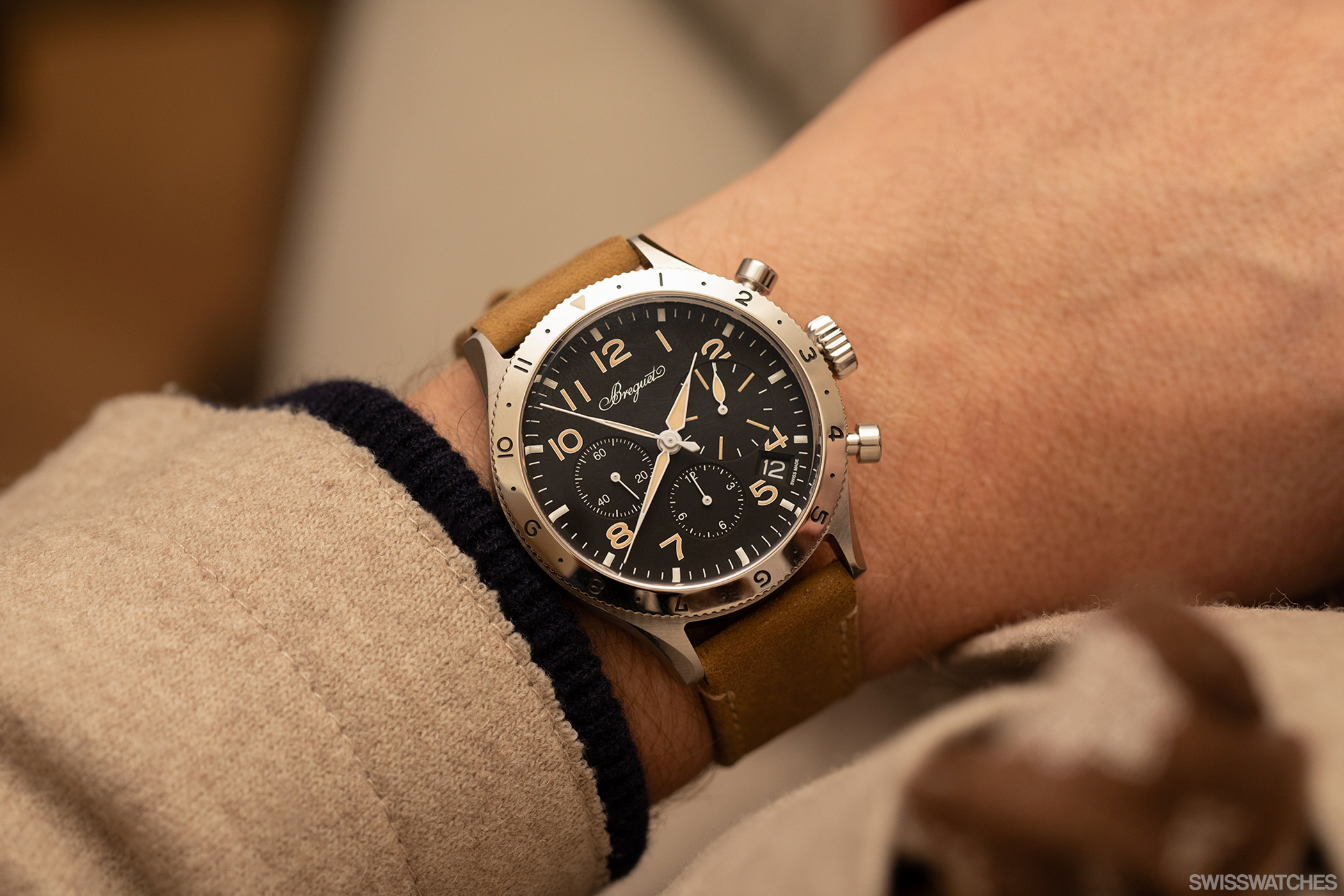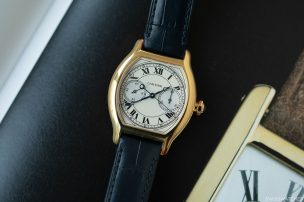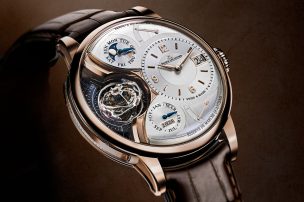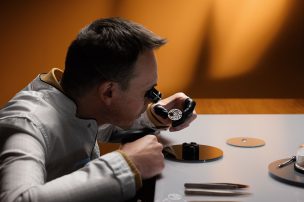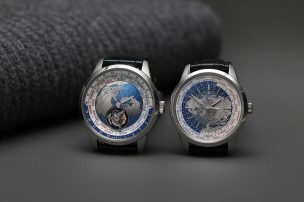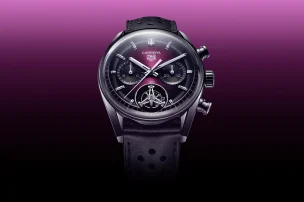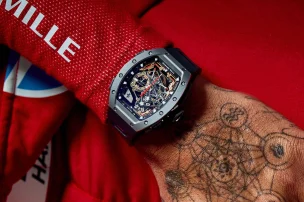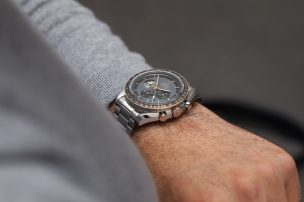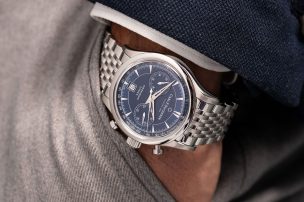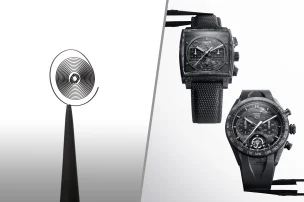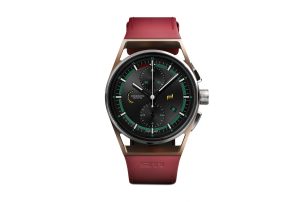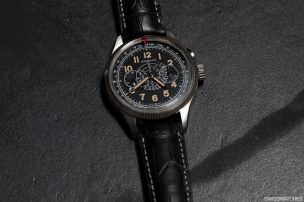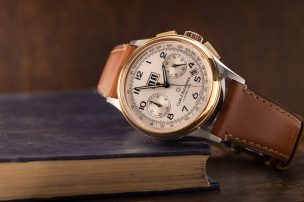
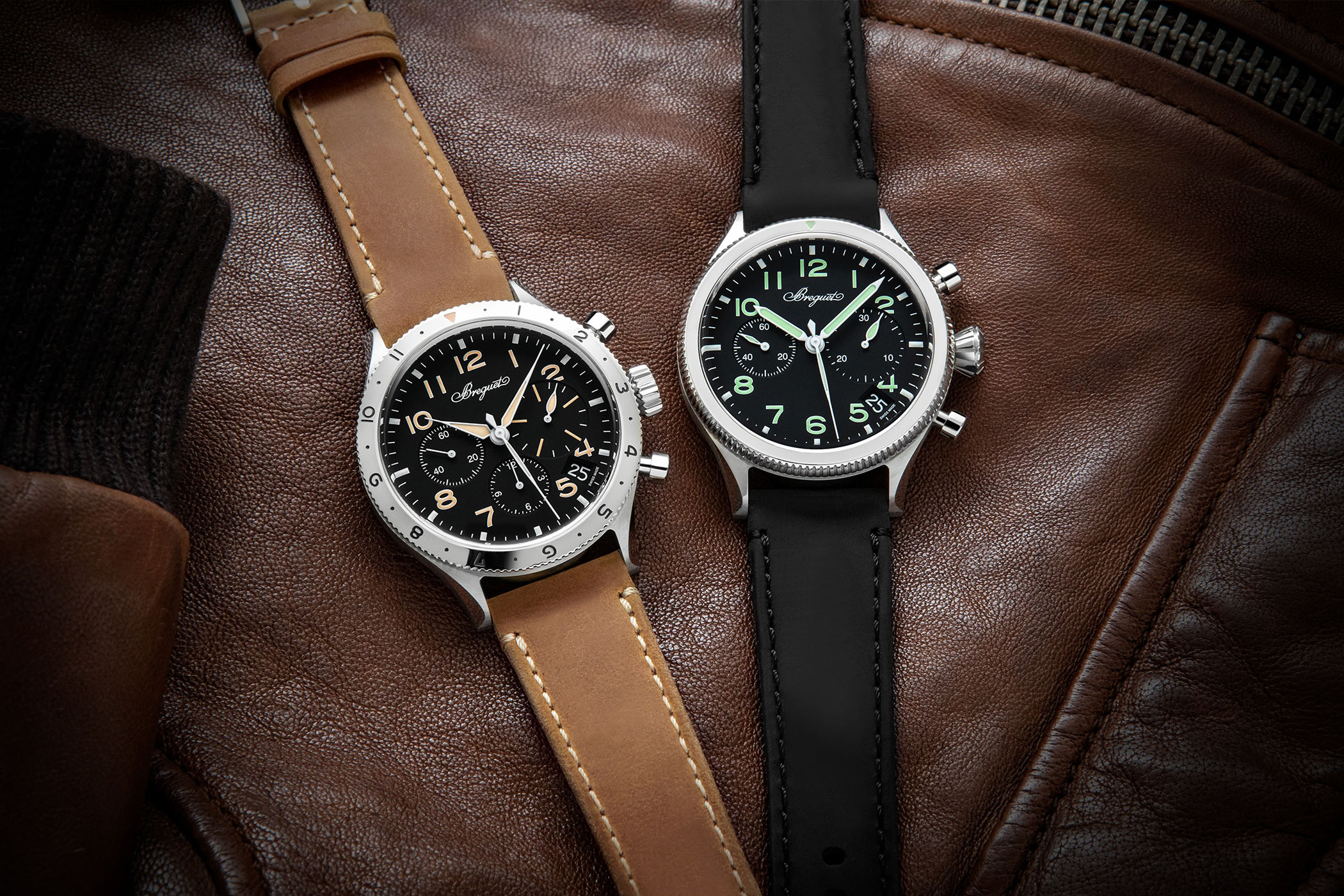
The Ultimate Guide to Breguet’s Type XX Pilot’s Watches
To mark the 70th anniversary of Breguet’s Type XX pilot’s watches, Emmanuel Breguet, the last descendant of company founder Abraham-Louis Breguet, took a good long look at the manufacture’s pioneering work in aviation. His findings soon revealed the important horological and historical role that the watchmaker played in the manufacture of precise onboard instruments, wristwatches for the military, and later for all amateur pilots and chronograph enthusiasts.
Thanks to Abraham-Louis Breguet’s innovative spirit, the invention of the tourbillon laid the foundations for the later success and recognition of the watchmaking company in 1801. Breguet thus became a reliable supplier of precision watches and was appointed watchmaker to the Royal Navy by King Louis XVIII in 1815 for his marine chronometers. It is no wonder then, that the demand for high-performance onboard clocks also increased with the rise of aviation, and state institutions were looking for reliable partners in the 20th century.
Even though the Breguet watchmaking company was already producing so-called ‘special products’ for aviation at the beginning of the 20th century, including aerodrome chronometers, chronographs with split-seconds hands, onboard chronometers, thermostats and siderometers, the first Type 20 / Type XX references did not appear until the early 1950s. These Type 20 / Type XX watches were destined to characterise Breguet’s pilot’s watches for the next 30 years – and, in fact, continue to do so to this day. Allow us to embark upon a journey through the evolution of this model series, exploring the most important developments and associated references along the way.
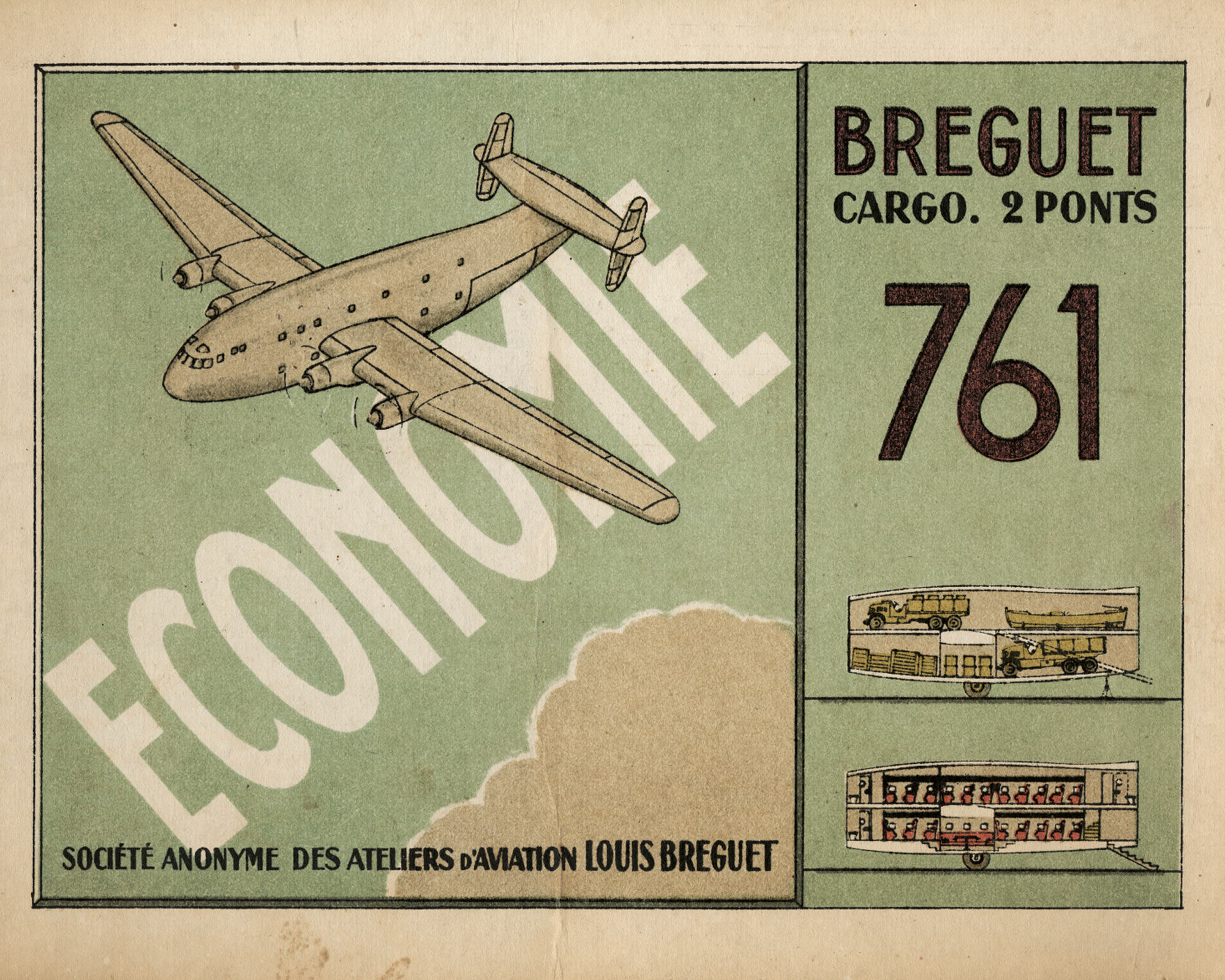

The difference between Type 20 and Type XX
When Breguet began producing the first ‘Type’ models in 1953, both Type 20 and Type XX reference designations appeared in the company’s production books. It is no longer entirely clear why the watch manufacture initially chose the different spellings. The dossier, which was compiled as part of the Ministry of Defence’s tender containing requirements such as the flyback function, onion crown, magnetism and temperature resistance, was called ‘Type 20’. Thus, the name for the military models was based on this. The Ministry of Defence then acquired the first watches with the numbers 1530, 1531 and 1532 as Type 20 references.
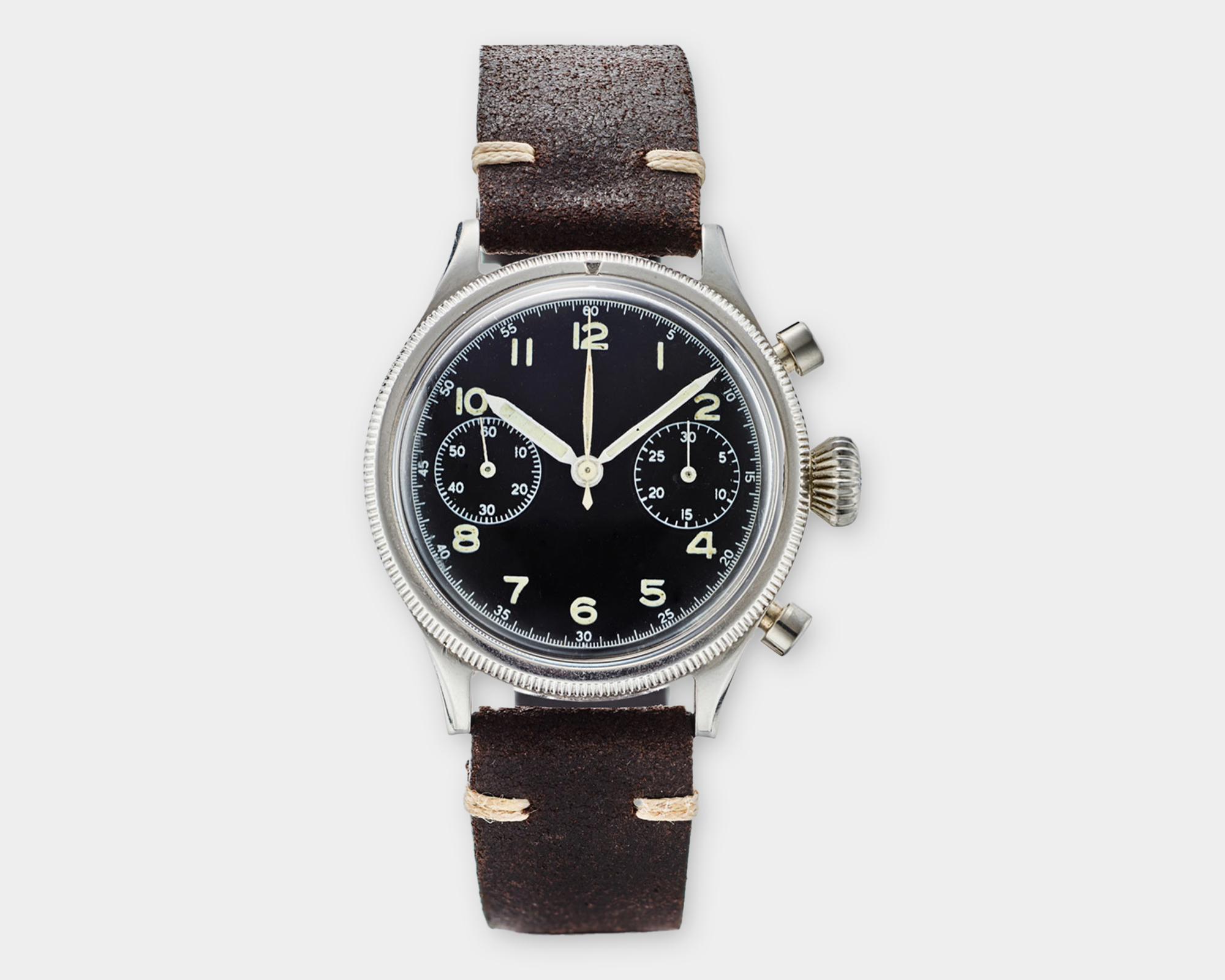
Type 20 from around 1955.
In 1955, the maison decided that all of its pilot’s chronographs should only be labelled Type XX, regardless of their development and version. However, there was one exception: a small series of eight pieces with 15-minute and 12-hour counters, which were produced in September 1957. Again, they bore the designation Type 20 and are thus highly sought-after amongst collectors today. In the same year, Breguet presented a new version of the Type XX, which was exclusively designed for civilian customers. By the early 1970s, a total of around 4,000 pilot’s chronographs had been produced, including almost 1,700 military Type 20 models and about 2,300 civilian Type XX models.
Type 20 Ref. 7168 from 1957 & detail of a Type XX dial with the 12-hour counter introduced in 1955
To summarise: strictly speaking, the Type 20 models only refer to the military watches that were delivered to the French Air Force (1,100 units), the Aéronautique Navale (500 units) and the CEV test flight centre (80 units). They were the state’s property and were only issued for the duration of service.
The beginnings of Breguet pilot’s watches (Type 20 forerunners)
According to Breguet’s history books, American pilots stationed in France in 1918 and Japanese pilots visiting France in the 1920s already purchased chronograph watches from Breguet at the beginning of the 20th century. The same applies to the Ateliers d’Aviation Louis Breguet, the aircraft manufacturer founded by Abraham-Louis Breguet’s great-great-grandson, Louis Charles Breguet, in 1911. From the 1930s onwards, Breguet manufactured special products for military aviation and airlines such as Air France. This included aerodrome chronometers with 19 lines (43 mm) diameter in anti-magnetic silver cases, chronographs with a split-second hand, and onboard chronometers with 24 lines (54 mm) in thermally insulated cases.
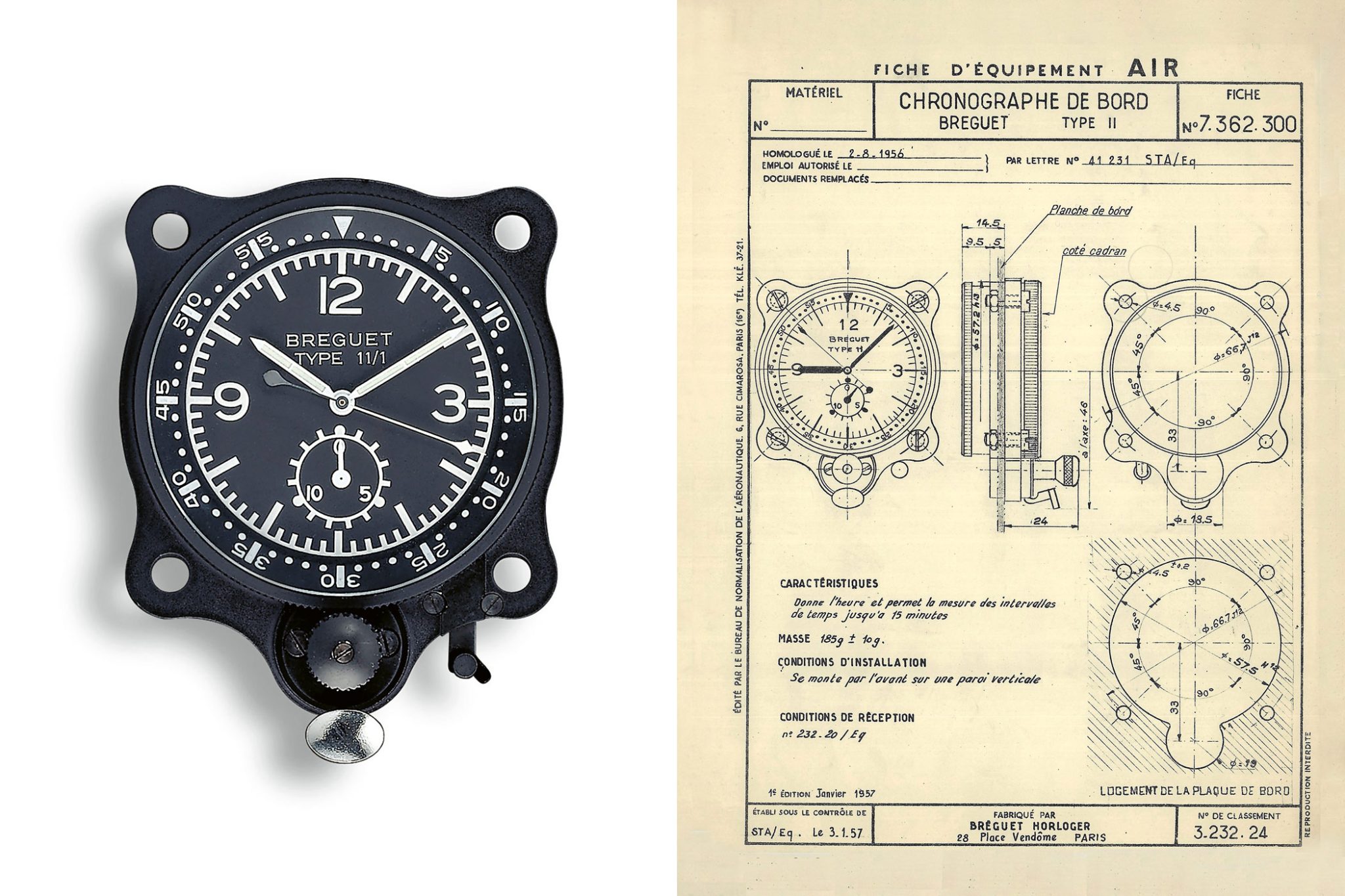
On-board chronograph Breguet No. 24570, Type 11/1 from 1981, plan of the on-board chronograph
For the pilots, the onboard clocks were vital instruments, but they also started to wear chronographs on their wrists for additional safety. Breguet launched its first wrist chronographs for fighter pilots in 1949, and number 460 was a unique piece for the French Air Ministry. It housed a 14-line Lemania movement – a chronograph with two pushers. In the same year, a series of five pilot’s watches appeared with the numbers 456 to 460, equipped with a 13-line Lemania movement.
Breguet’s first flyback chronograph
Between 1949 and 1950, Breguet produced six watches numbered 409 to 414. For the first time, they were equipped with a rotating bezel and a chronograph that could be reset to zero and restarted by pressing the chronograph once. From October 1950 to November 1951, Breguet manufactured another small series of six watches (832 to 837). In addition to the rotating bezel and flyback chronograph, these timepieces had a 30-minute counter. At that time, however, Breguet did not yet refer to the function as flyback (fr. retour en vole). However, it should be noted that Longines had already developed and patented the flyback mechanism in 1936. Between July 1951 and October 1952, Breguet expanded its range with twelve new chronographs (numbers 983 to 994) featuring a 12-hour subdial counter in addition to the 30-minute counter, albeit without the flyback function.
In 1952, the French Air Force’s Service Technique Aéronautique (STAé) set out to find a reliable supplier for pilot chronographs and published a demanding selection procedure. A small extract included the following criteria:
- black dial with Arabic numerals
- 38 mm case
- bidirectional rotating bezel
- chronograph with flyback function
- maximal rate deviation of the movement of +/- 8 seconds per day
- power reserve of at least 35 hours
Breguet accepted the challenge and delivered three timepieces with the numbers 1200, 1201, and 1202 to the French Air Force on 23 July 1952.
Lemania becomes Valjoux
In 1952, the tried-and-tested Lemania movement became obsolete and Breguet started installing a Valjoux 22 calibre in all of its pilot’s chronographs. It comprised an additional flyback module, which Breguet mainly referred to as a ‘special function’ at the time. The movement manufacturer Valjoux, which was primarily recognised for its chronographs, initially provided Breguet with two variants. Calibre 222 included a 15- or 30-minute counter, 35-hour power reserve, and column wheel control, while Calibre 225 had an additional 12-hour counter. These two movement variants were used in the Type XX models until 1963 when they were succeeded by two modernised calibres, Valjoux 230 (for Type XX chronographs with two counters) and Valjoux 720 (for Type XX chronographs with three counters) with additional Incabloc shock protection and a balance with a single rim. Another movement update followed in 1971 with the two calibres Valjoux 235 (two counters) and Valjoux 725 (three counters), which oscillated at a frequency of 3 Hz (21,600 vibrations per hour).
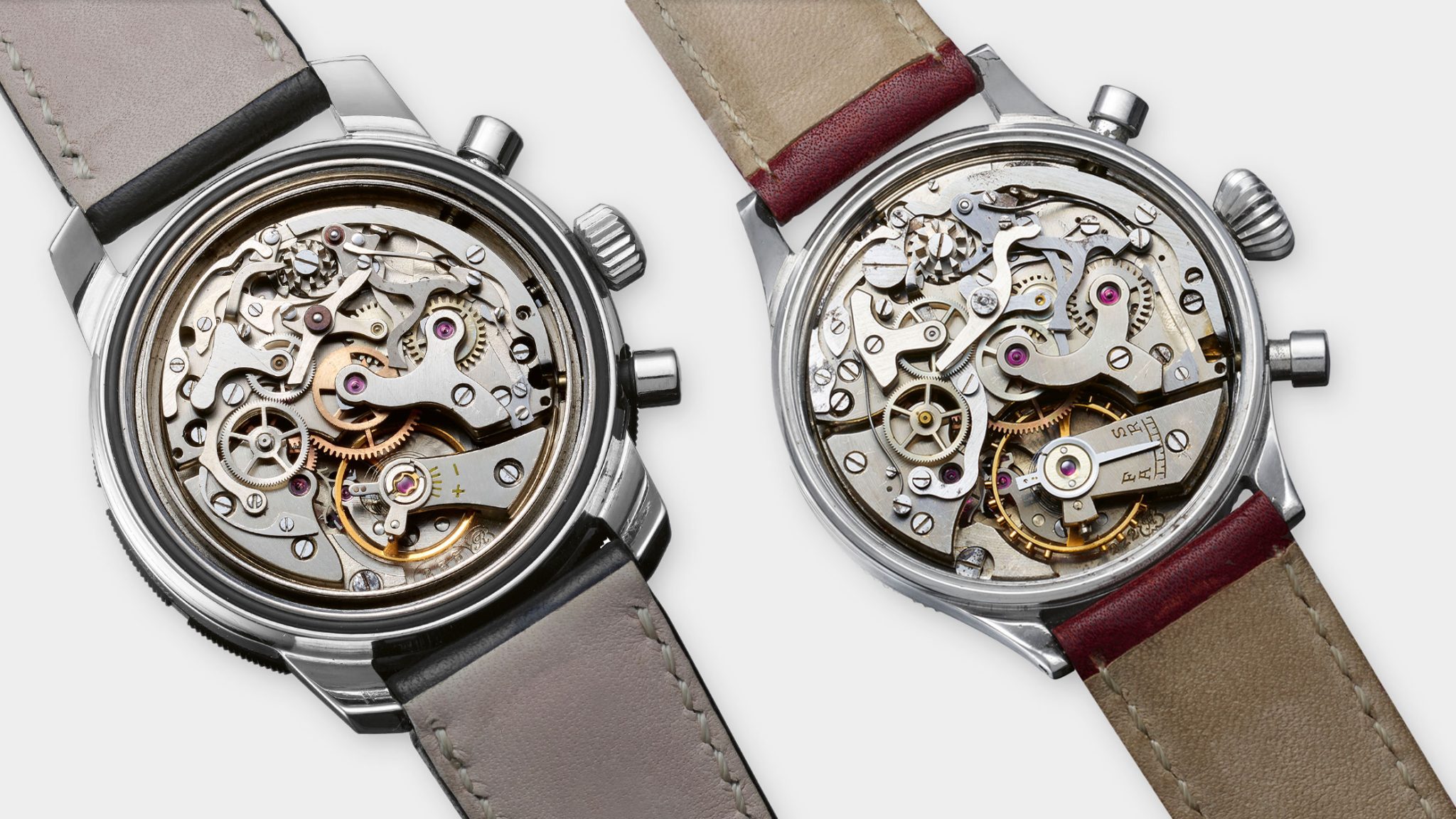
Valjoux 22 & Valjoux 235
The last non-Type 20 watches appeared in December 1952, from the numbers 1163 to 1412. The series of 24 timepieces featured the number 1408, the first to have a gold case with a silver dial and tachymeter scale.
1953: The first Type 20 / Type XX pilot’s chronographs
When Breguet officially supplied the French Air Force with its pilot’s watches, the supplement ‘Type 20’ appeared on the three reference numbers 1530, 1531 and 1532 for the first time in the spring of 1953. The trio was completed on 27 April 1953 and sold to the Ministry of Defence in July.
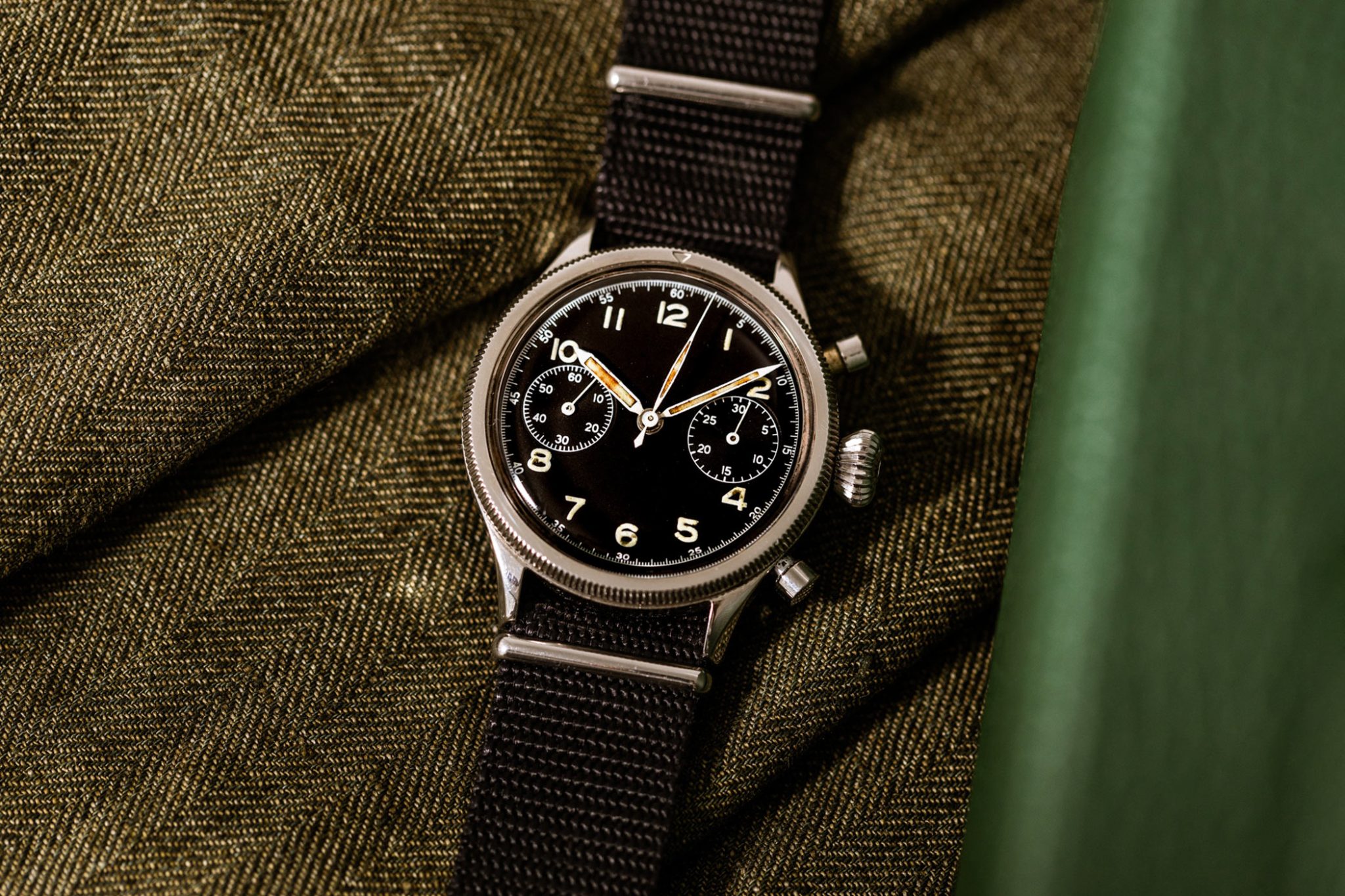
A Type 20 for the French Air Force from 1954
Credit © Bachmann-Scher
In the same year, however, two further references with the numbers 498 and 499 can be found in Breguet’s sales books. What was striking was that the number 498 was labelled with the addition ‘Type 20’ and the number 499 with the addition ‘Type XX’. Both watches had a steel case with a gold bezel and were identical apart from the different designations. They were sold to the Ateliers d’Aviation Louis Breguet in 1954. The two watches were the first in a series of 27 ‘simple’ Type XX chronographs, numbered from 498 to 524. Only three of them are labelled as Type 20. Number 519 was acquired by the last emperor of Vietnam, Bao Dai.
After the French Air Force received the three models mentioned above, a large order for 1,100 Type 20 chronographs with the order number 5101/54 followed in 1954. These military pilot chronographs were characterised by their smaller diameter of 38.3 mm, a 30-minute counter, a bezel without a scale, the pear-shaped crown, and the Valjoux calibre 222 with flyback function. The dials were not signed – an unimaginable thing today.
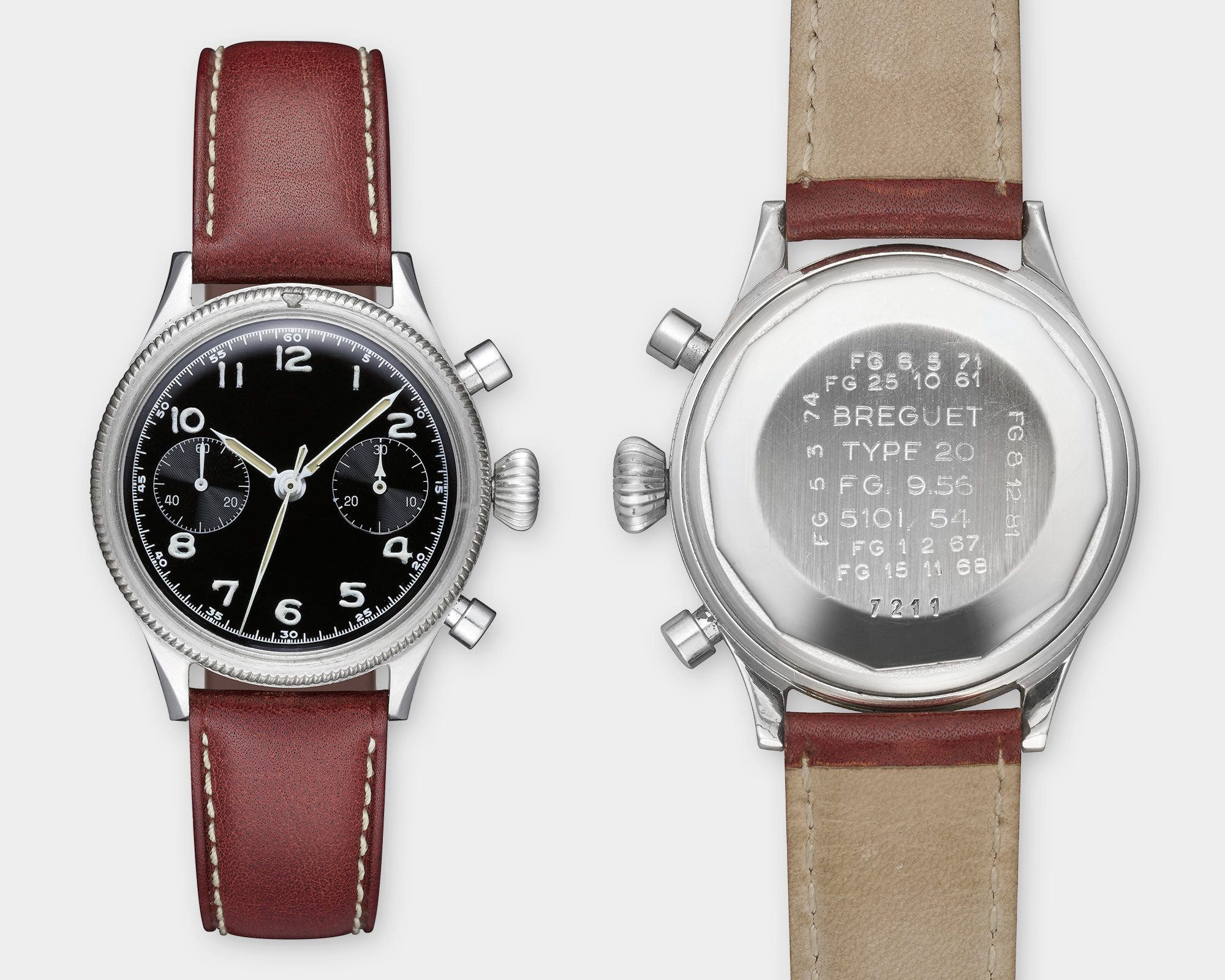
Type 20 No. 7211, delivered to the Ministère de l’Air on 16 November 1955 (1,100 units)
The first 250 chronographs were delivered on 17 June 1955. Further deliveries gradually followed in small instalments. The last 120 Type 20 watches were delivered in 1959.
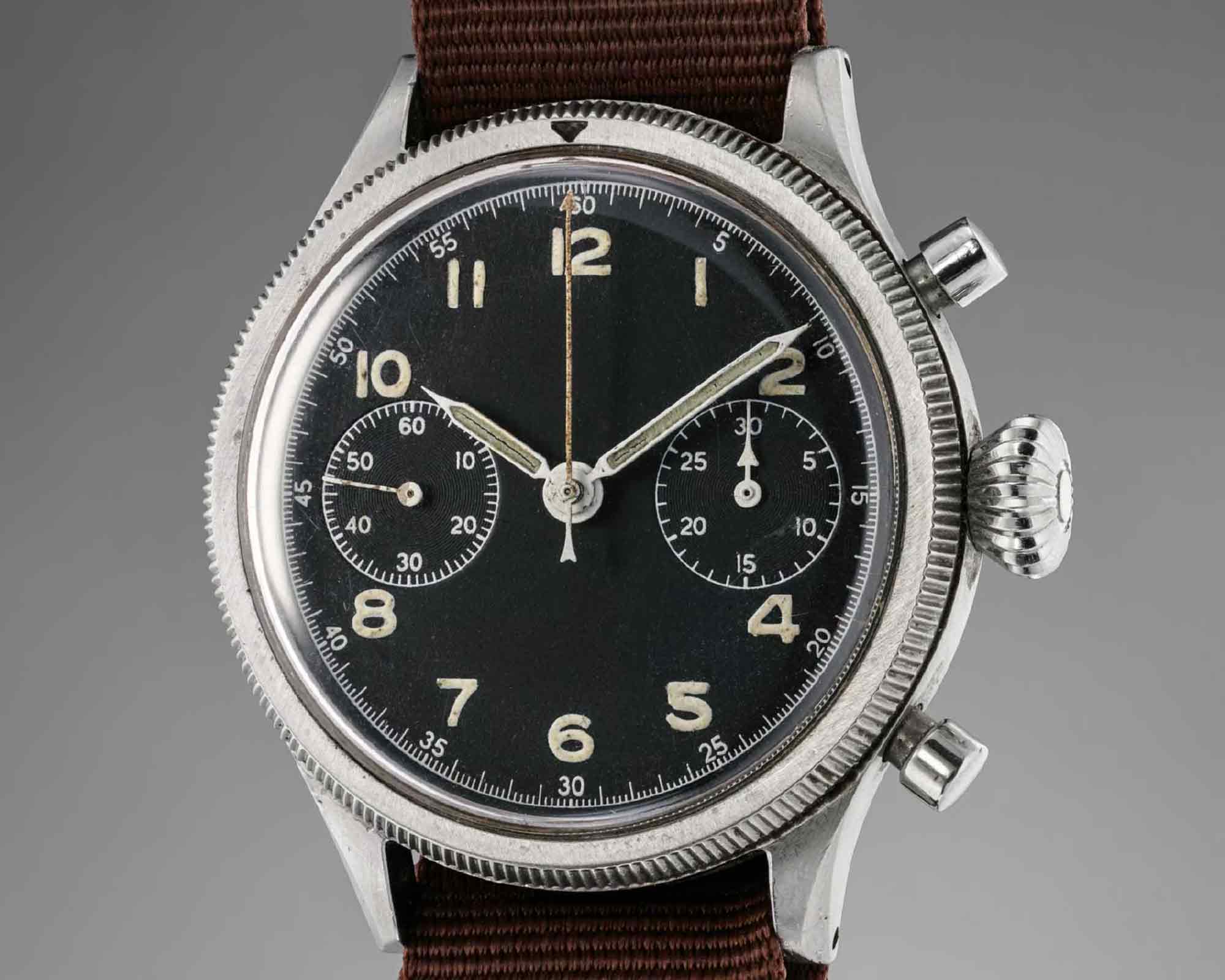
Vintage Type 20 Ref. 5101/54 from 1955
Credit © Revolution Watch
Three times gold
After a reference (number 1408) with a gold case appeared in 1952, Breguet released two gold versions with the numbers 1781 and 1780 featuring a satin-finished silver dial, gold hands, and a tachymeter scale in February and March 1955. Number 1780 was labelled as ‘Type XX’, while number 1781 was classified as ‘Type 20’. Breguet manufactured only three pilot’s watches with gold cases and the number 1408 in 1952– there are no more than that.
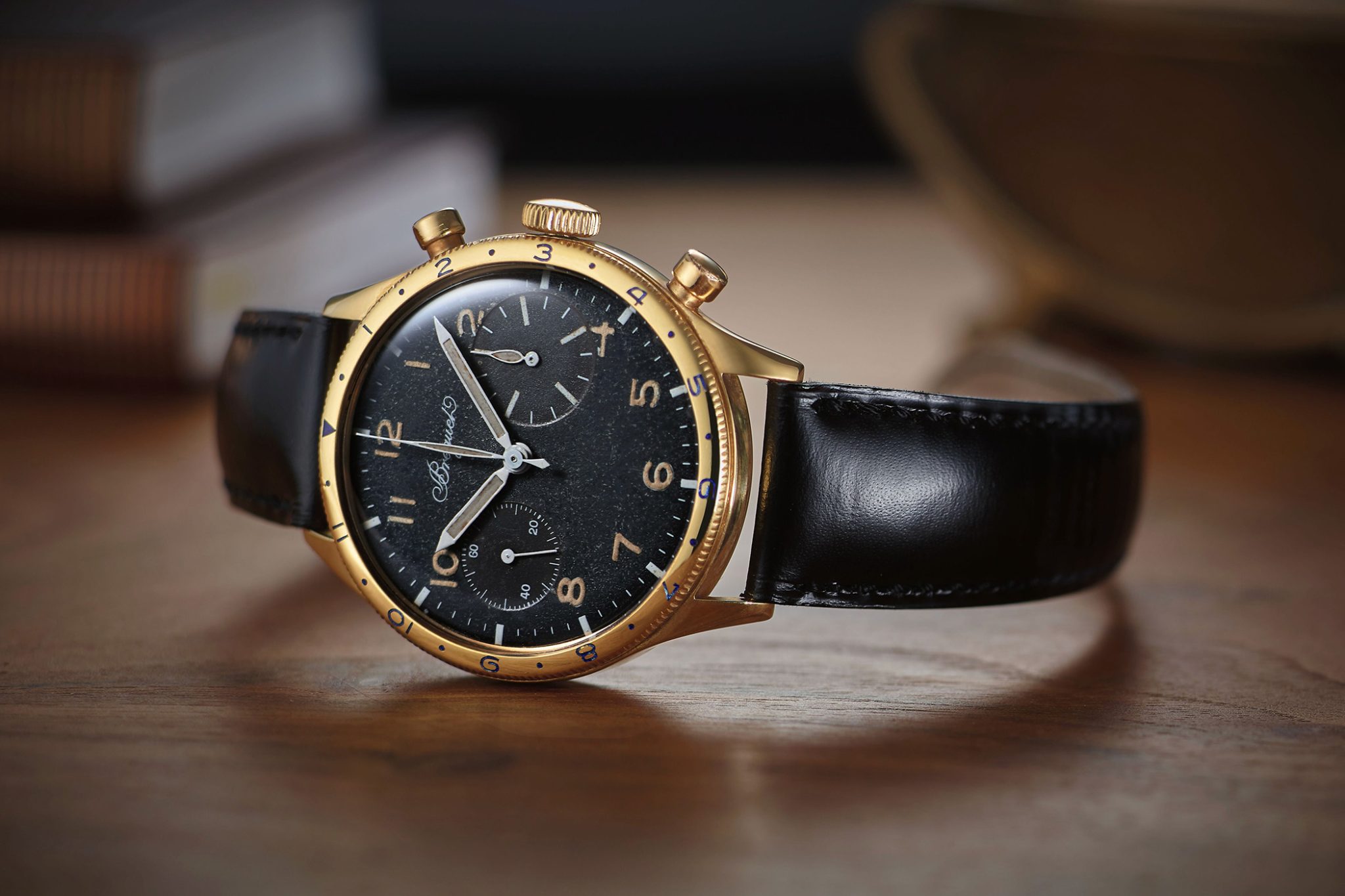
Ref. 1780
1955: Type XX only
Two years after introducing the first Type 20 model designation, Breguet decided to label all pilot’s watch chronographs as Type XX with immediate effect, regardless of their development and variant. With one exception: a small series of eight pieces with 15-minute and 12-hour counters, which were produced in September 1957 and still bore the designation Type 20. It is not known for whom Breguet made these eight Type 20 watches.
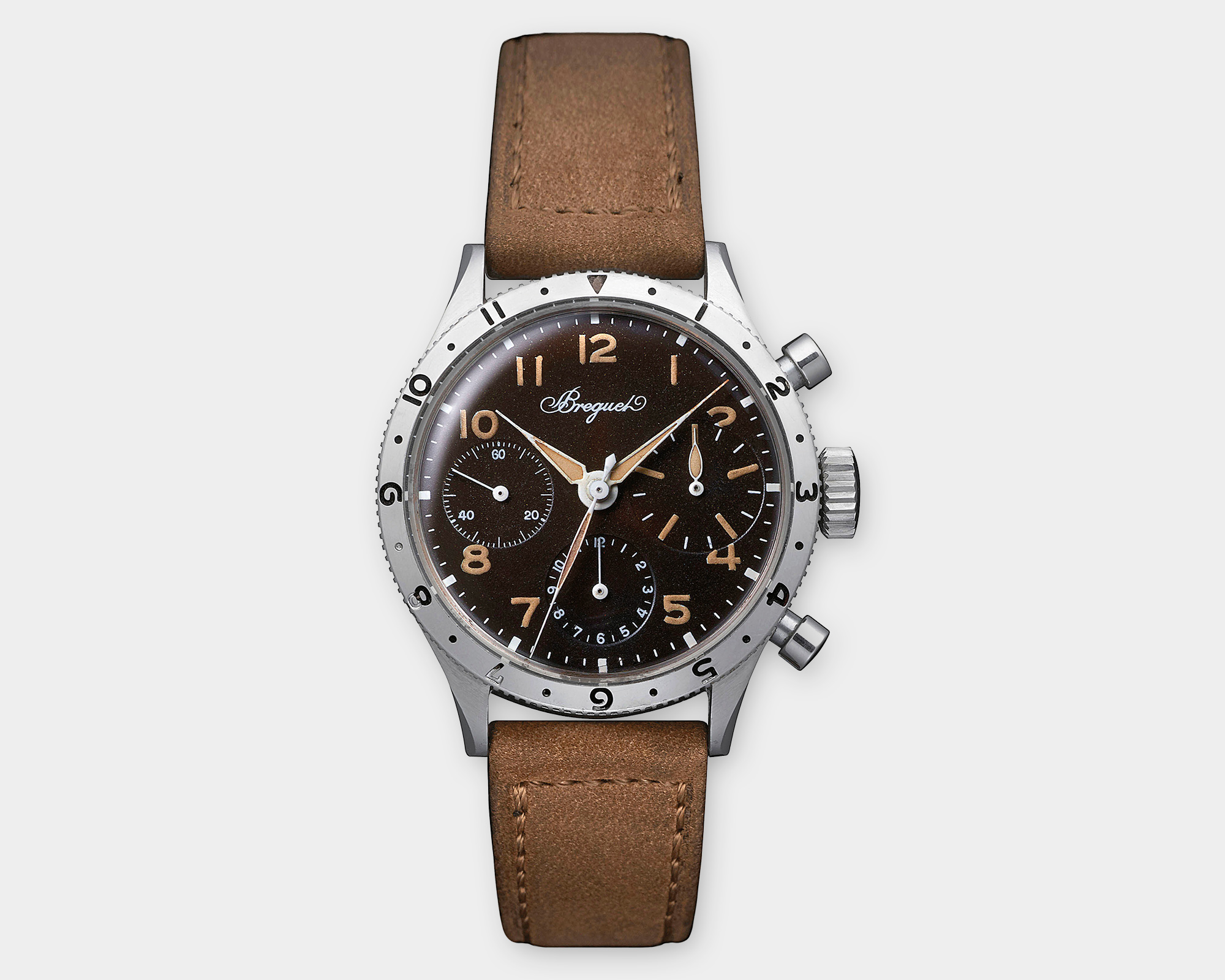
Type XX no. 2988, sold in June 1957 to the Centre national d’études des télécommunication
Due to its increasing popularity outside the military sector, Breguet introduced a Type XX pilot’s chronograph with the number 1888 in 1955. The 25 produced pieces were designed for civilian customers and had an additional 12-hour counter at 6 o’clock. Aside from amateur pilots and chronograph enthusiasts, numerous aviation-related organisations also showed interest in the watches, including
- Aérotechnique Alger
- SFATAT Saint-Cyr
- STNA (Service technique de la navigation aérienne)
- ENAC (Ecole nationale de l’aviation civile)
- Gendarmerie nationale
- SMFA
- OGA (Office general de l’air)
- Aéro-Club de France
And many more…
In the years that followed, around 2,300 civilian Type XX models were thus produced and appreciated by pilot’s watch enthusiasts across the globe. These watches’ preeminent distinguishing features were a Valjoux calibre 225, 230, or 720 with flyback function, disproportionate 15-minute counters with five 3-minute divisions at 3 o’clock, small seconds at 9 o’clock, and a 12-hour counter at 6 o’clock. The scaled bezel was bidirectional.
1958: Aéronautique Navale
1958 marked another critical year in the evolution of the Type XX, when the French Air Force and the naval aviators (Aéronautique Navale) expressed their interest in Breguet’s pilot’s watches. The Aéronautique Navale was not affiliated to the Air Force, but to the Navy. As mentioned above, 500 pieces, starting with the number 4100, were delivered to the Aéronautique Navale on 13 January 1960. They distinguished themselves from Breguet’s other military Type XX models through the large 15-minute counter, the signed dial and case back, and the non-graduated bezel.

Aéronautique Navale advertising poster from the 1950s
Credit © D.R. Bastien Otelli
Type XX Aéronautique Navale No. 4100 & Type XX No. 5096, sold in January 1960, one of the rare examples with a coloured dial
1971-1986: Type XX of the second generation
At the beginning of the 1970s, Breguet launched a new generation of Type XX pilot’s watches with a larger case diameter of 40.7 mm and wider square lugs. Similar to the first generation, the 770 pieces of this series either had two or three counters.

Type XX No. 21326, which was sold to the Royal Air Force of Morocco in October 1975.
According to Breguet’s books, sales figures declined at the beginning of the 1980s. On the one hand, the watch industry was in the midst of the quartz crisis. On the other hand, Breguet increasingly focused on classic watches with complications and in gold, as they were more in demand than pilot’s chronographs at the time. In 1986, the last 38 watches were sold and the Type 20 / Type XX era ended for the time being.
1996: Third generation Type XX
Ten years after the final timepieces had been sold, the Type XX was given a new lease of life in 1996 as chronographs became more sought-after once again. Moreover, Breguet had taken over the movement manufacturer Nouvelle Lemania and returned to the tried and tested Lemania movement – this time with the modernised Calibre 582 (based on Lemania 1350), which, for the first time, featured an automatic winding and, of course, a flyback function. Unprecedented for this collection, the reference numbers 3800 and 3820 also featured the typical Breguet fluting on the centre part of the case, which we recognise from many of the brand’s other watch lines today.

The first two thousand Type XX 3800ST chronographs have a crown with a gold finish
The reference 3800 from 1995 was christened ‘Aéronavales’ in homage to the naval aviation squadron of the same name. The reference 3820 from 1997 was dedicated to the successes of Breguet aeroplanes – above all, the first non-stop flight from Paris to New York with the ‘Breguet 19’ aeroplane from 1930. Therefore, the timepiece was named ‘Transatlantique’ and distinguished itself through a date function at 6 o’clock. Around 20,000 pieces of each reference were produced, including two special editions of 90 pieces in platinum and 150 in yellow gold and red gold, limited editions, a model with an alarm function, and an anniversary model.
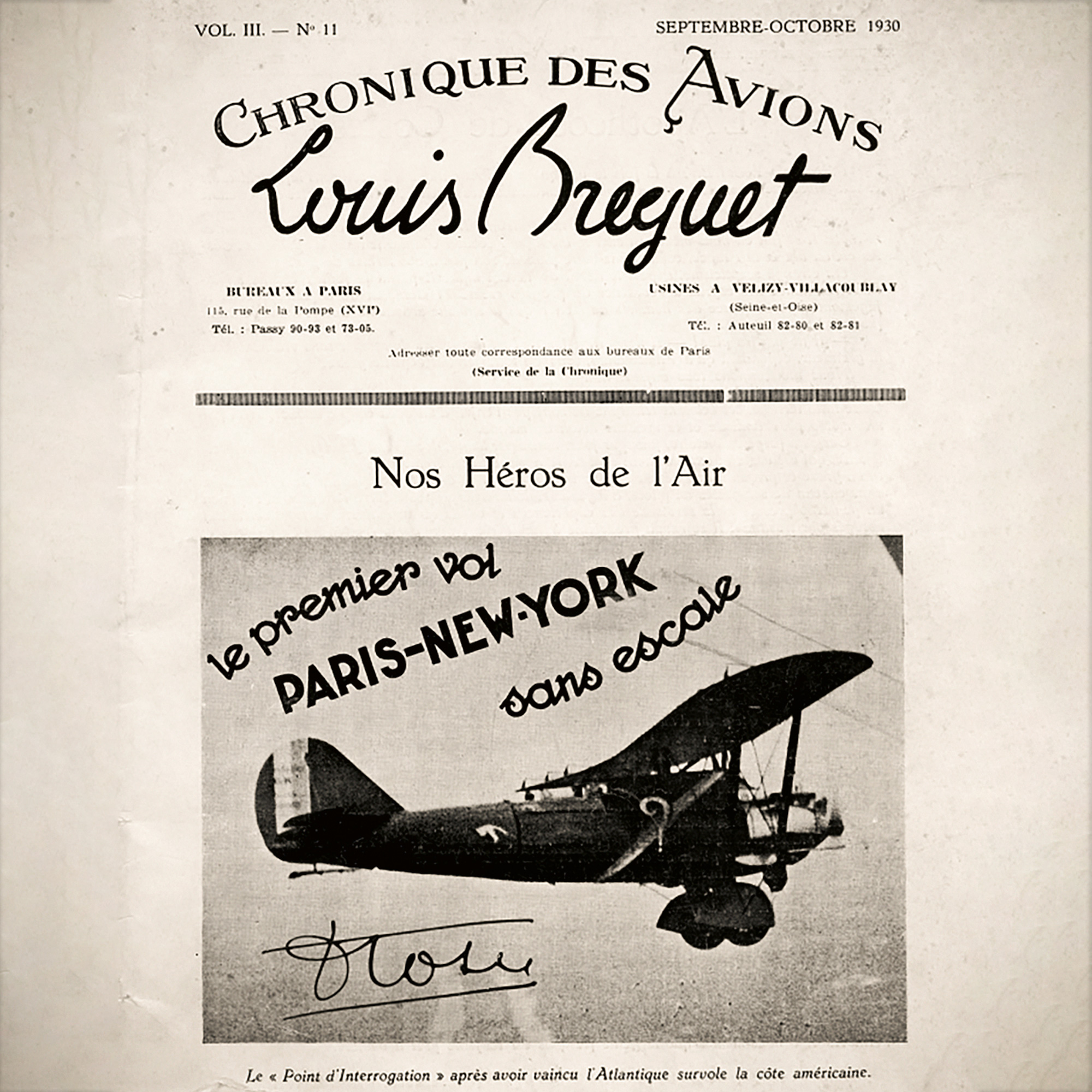
In honour of the first flight from Paris to New York in a Breguet 19, the third-generation Type XX was christened “Transatlantique”.
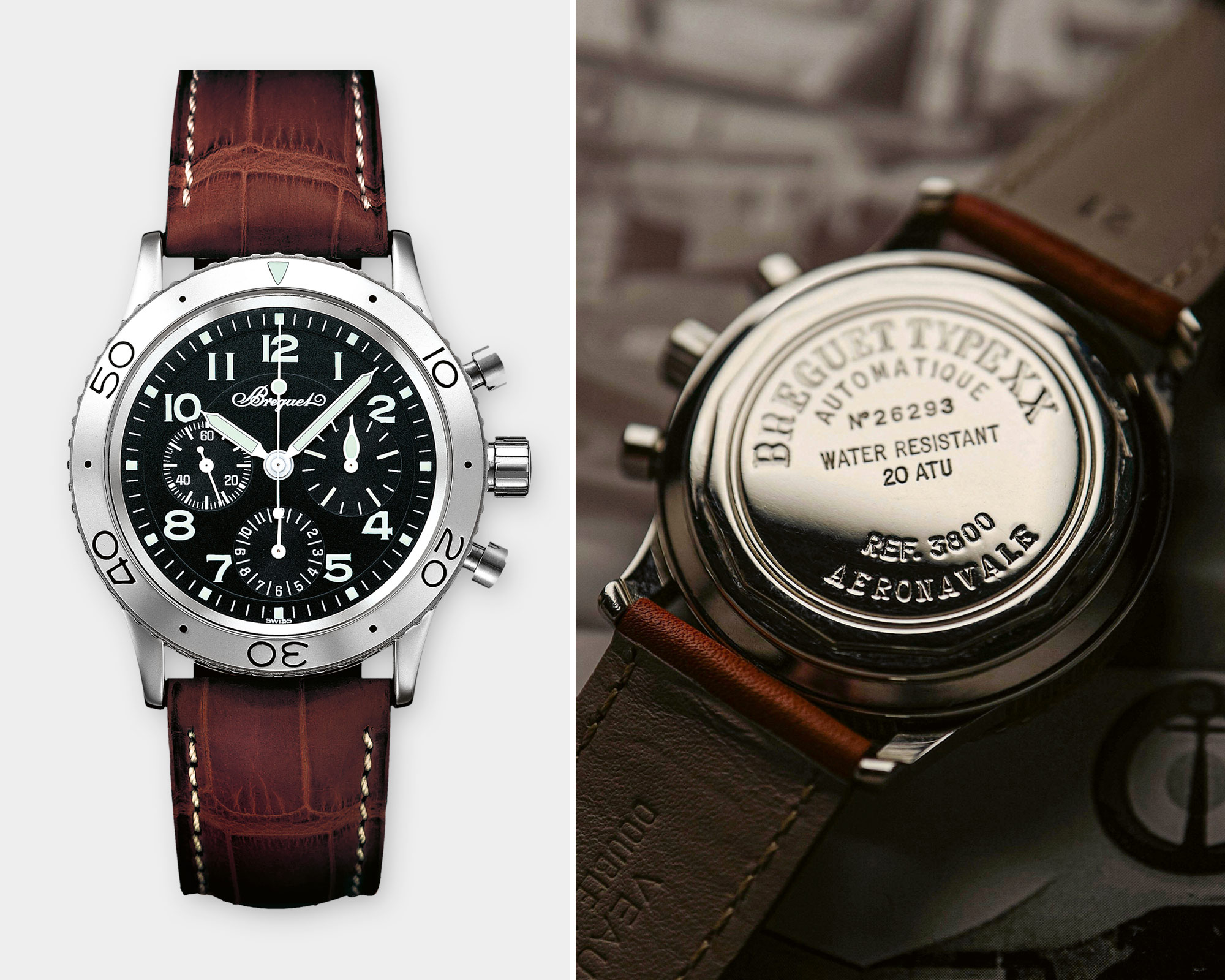
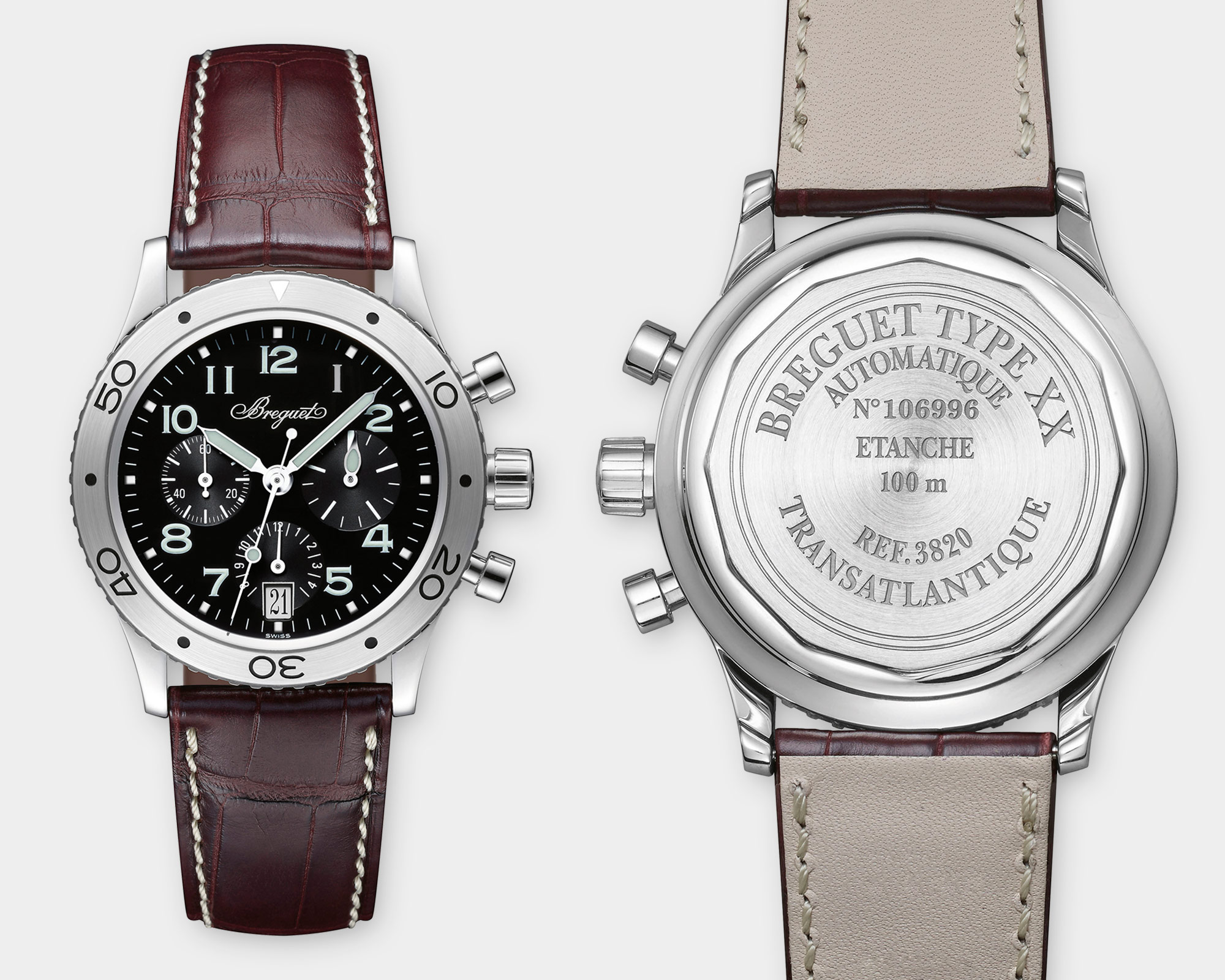
Type XX Ref. 3800ST for the Aeronavale flying squadron & Type XX Ref. 3820 Transatlantique
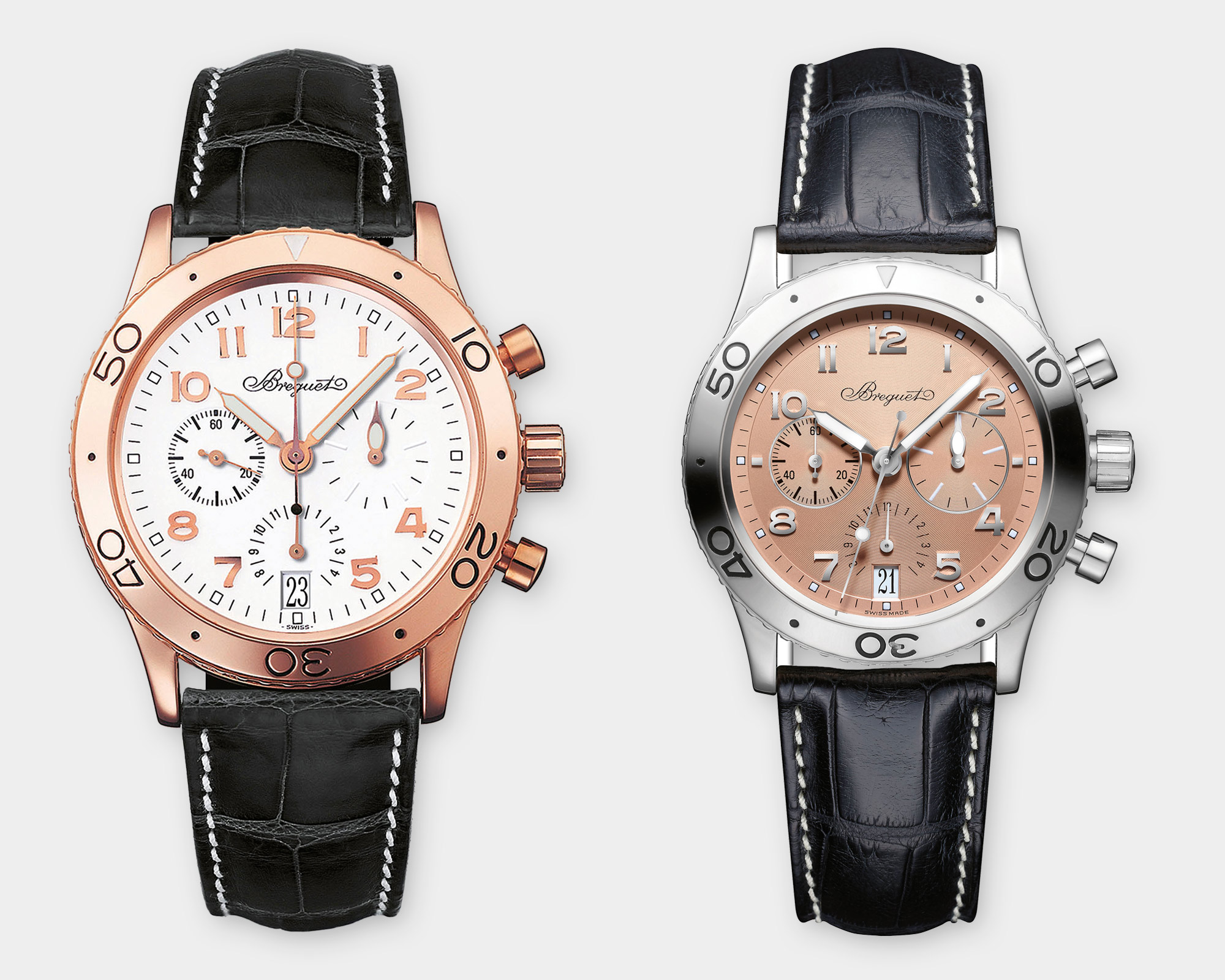
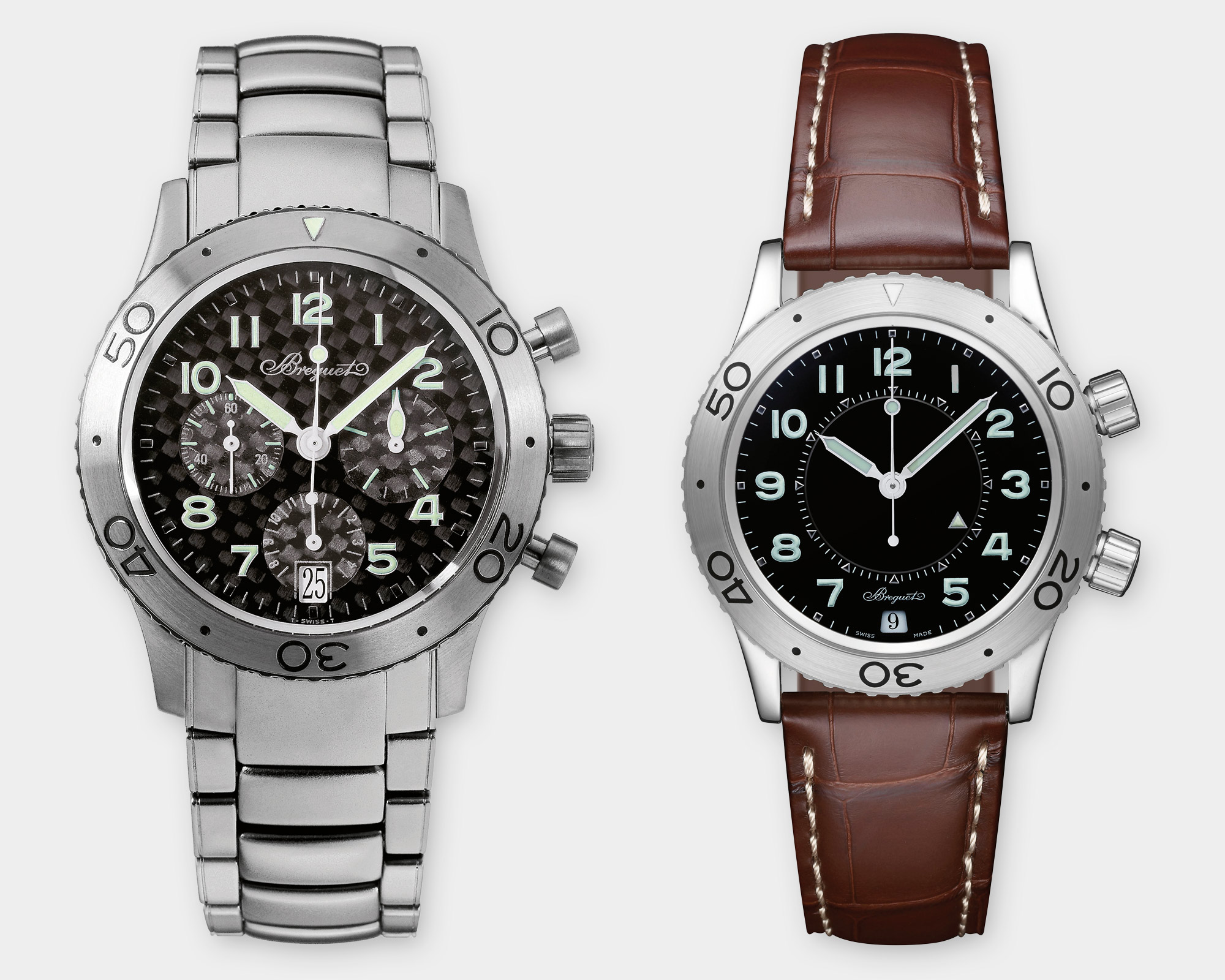
Type XX Ref. 3820 red gold (around the year 2000) & Type XX Ref. 3827PT platinum next to Type XX Ref. 3820TI “Transatlantique” in titanium appeared in 2002 & Type XX Ref. 3860ST “Transatlantique” with alarm function
2004: The Type XX under the management of the Swatch Group
When the Swatch Group took over the Breguet watchmaking company in 1999, the Group management endeavoured to take its pilot’s chronograph into a new era without changing the aesthetics that defined the Type XX too much. The case, the shape of the lugs, and the fluted centre section remained unchanged. However, to meet the demand for a larger case diameter, the new Type XXI 3810 (available in stainless steel and rose gold) had a 42 mm case. What else has changed? Whereas the predecessor models 3800 and 3820 still had a 30-minute counter at 3 o’clock, the timepieces now feature a day/night display. In addition to the central chronograph seconds hand, a central minute counter hand with an arrowhead also circles the chronograph seconds and minutes scale. Another new feature is the ‘Retour en vol’ lettering on the dial, in a nod to the flyback function.
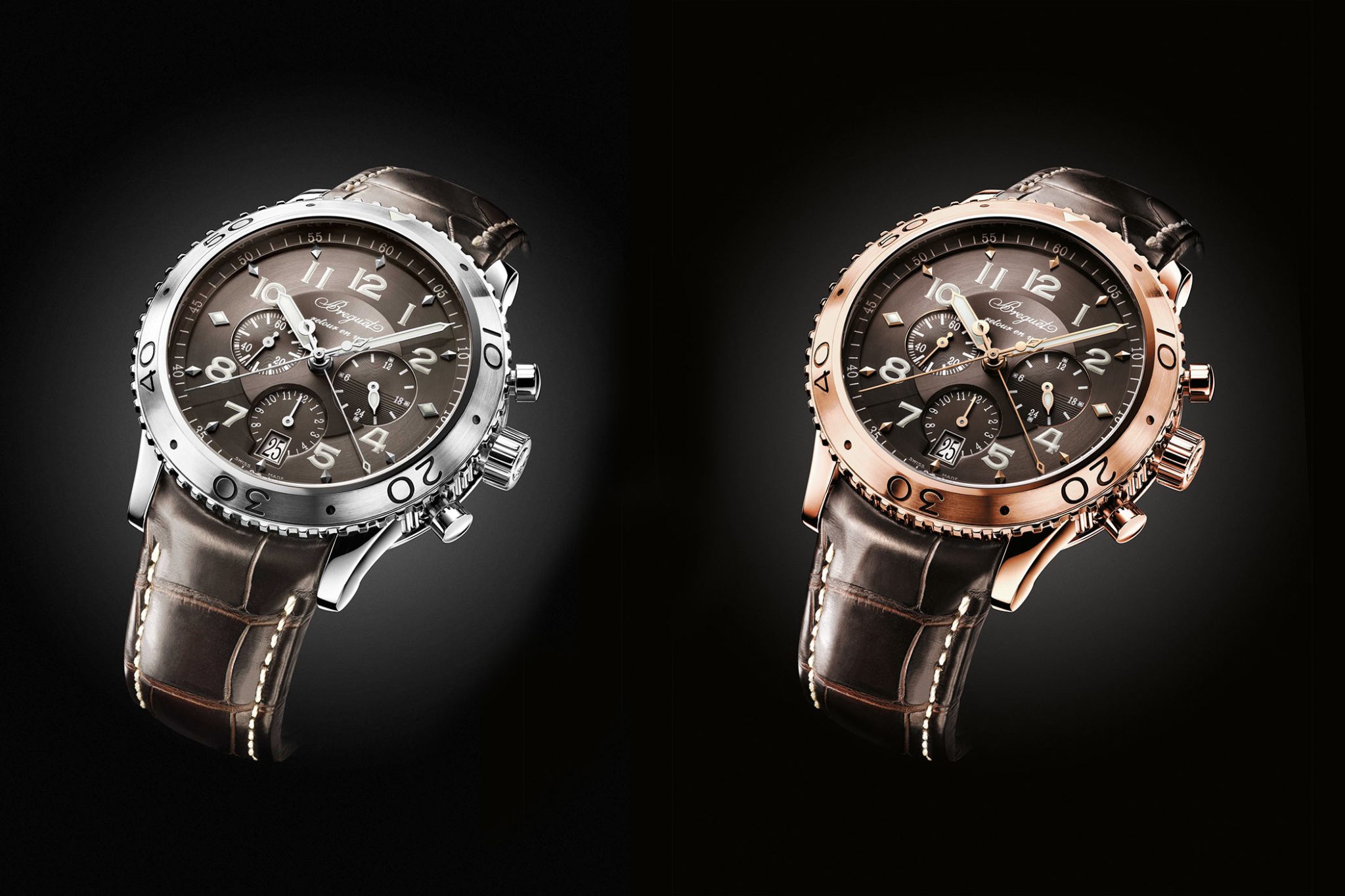
Type XXI 3810 in stainless steel and rose gold
2010: Special Editions
Breguet Type XX Aéronavale Limited Edition Watch
In 1958, the French Navy ordered 500 Type 20 pilot’s watches from Breguet. The watches from number 4100 onwards were delivered to the Aéronautique Navale on 13 January 1960. To mark the 50th anniversary of Breguet’s Aéronautique tool watches and the 100th anniversary of the French Navy’s aviation unit, the watchmaker launched the Type XX Aéronavale Ref. 3803ST923W6 in 2010. The collection was limited to 1,000 pieces and, true to the original, the 3 o’clock position once again featured a 15-minute counter instead of the newly developed day/night display.
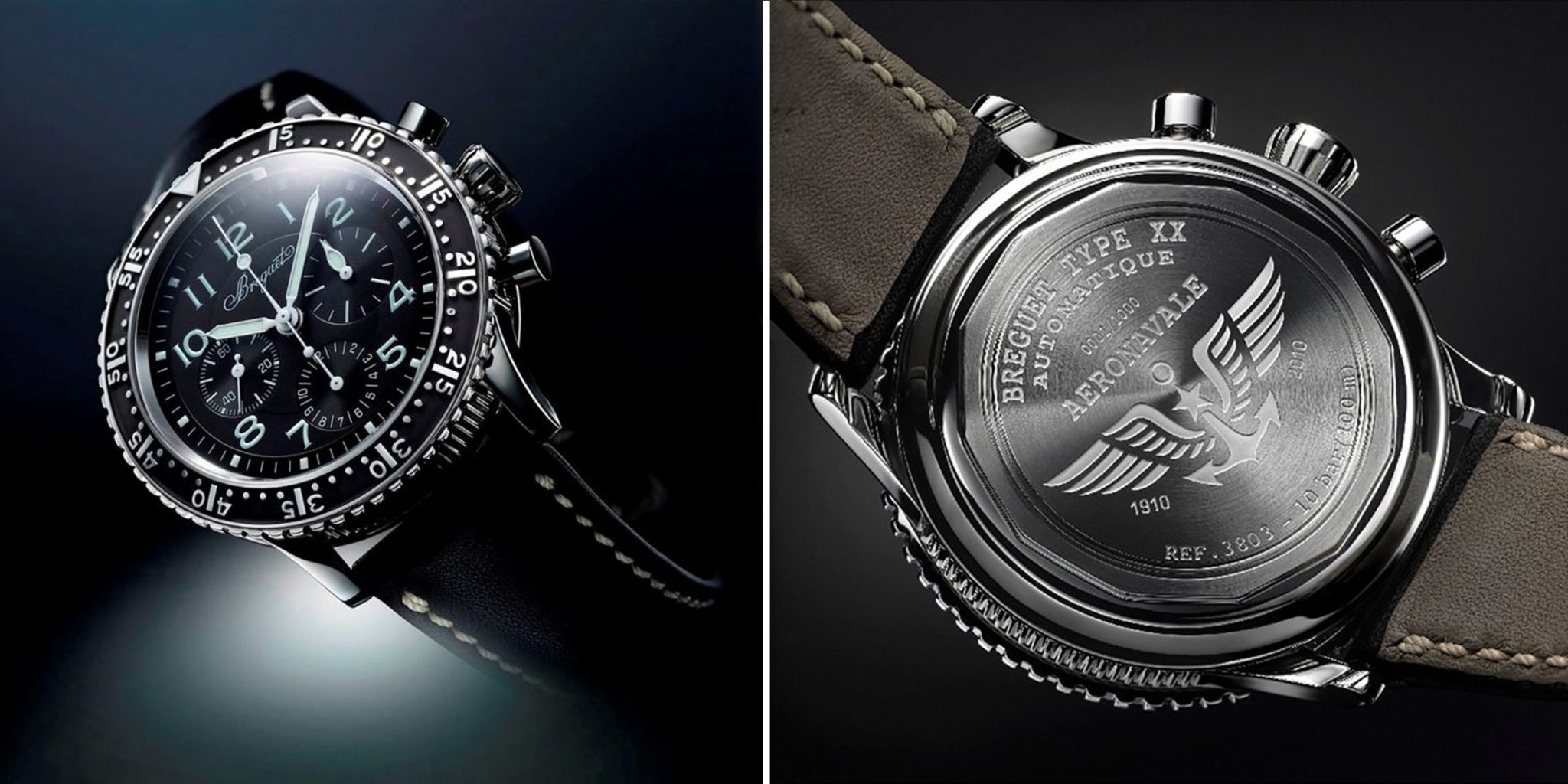
Breguet Type XXII 3880 ST (with 10Hz movement)
In 2010, Breguet also presented the Type XXII 3880, which, above all, demonstrated the technical sophistication of the manufacture. The watch incorporates a balance wheel that oscillates at a frequency of 10 hertz and can stop the time twice as precisely as a conventional chronograph.
Type XXII 3880ST
In fact, the chronograph’s second hand circles the dial in just 30 seconds. Therefore, it takes some time to get used to reading the stopped time on the 30-second graduated scale. Meanwhile, the calibre 589F automatic movement houses a silicon balance spring. A small viewing window on the caseback allows a view of the silicon balance wheel, balance spring, lever, and escapement wheel. Using silicon, Breguet solved the problem of lubrication at high frequencies.
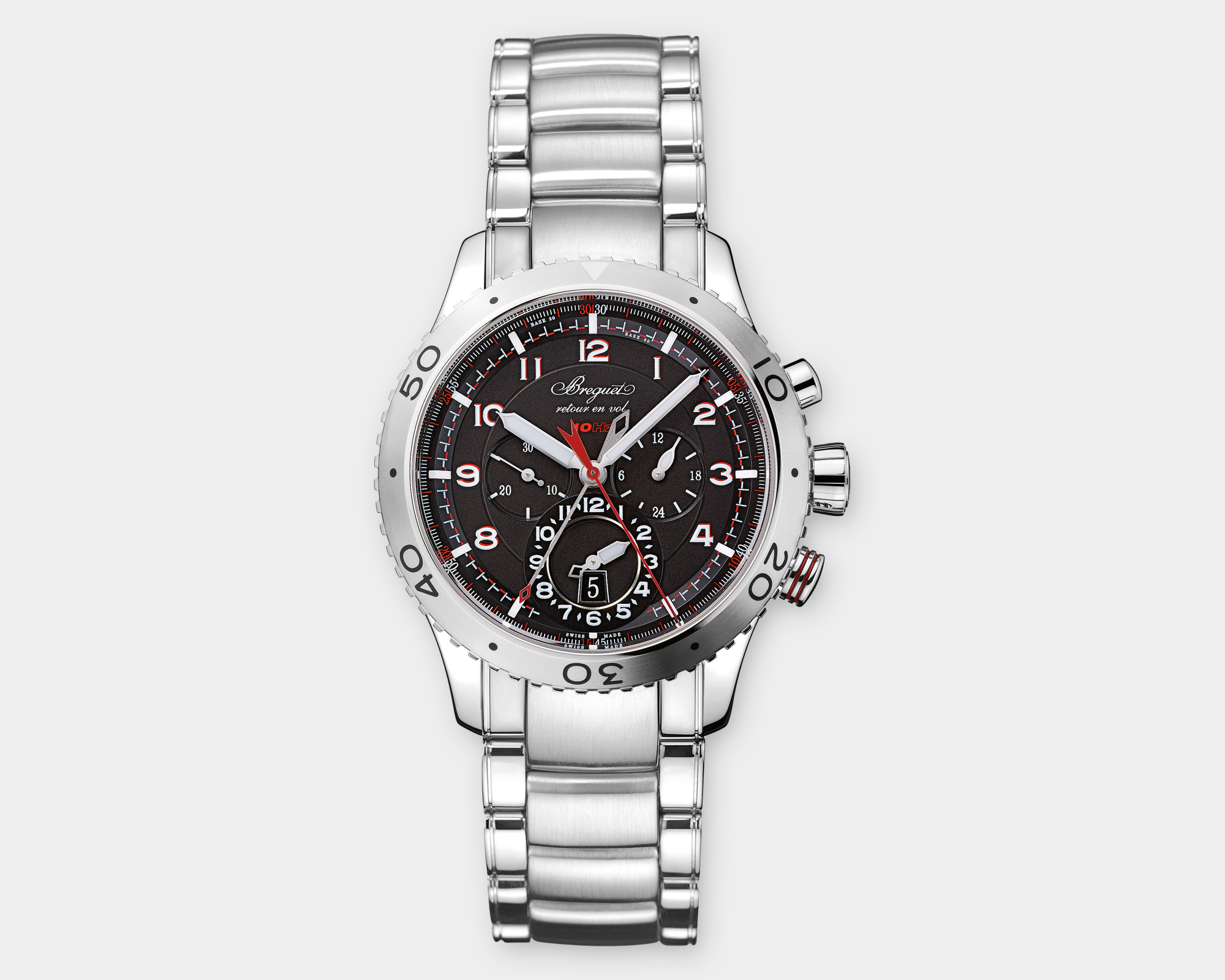
Type XXII 3880ST
In addition to the chronograph, the Type XXII also features a 24-hour display at 3 o’clock and a second time zone with the date at 6 o’clock. The watch initially appeared with a 44 mm stainless steel case. Three years later, a version with a pink gold case followed. Around 2,325 examples of the 3880 were produced.
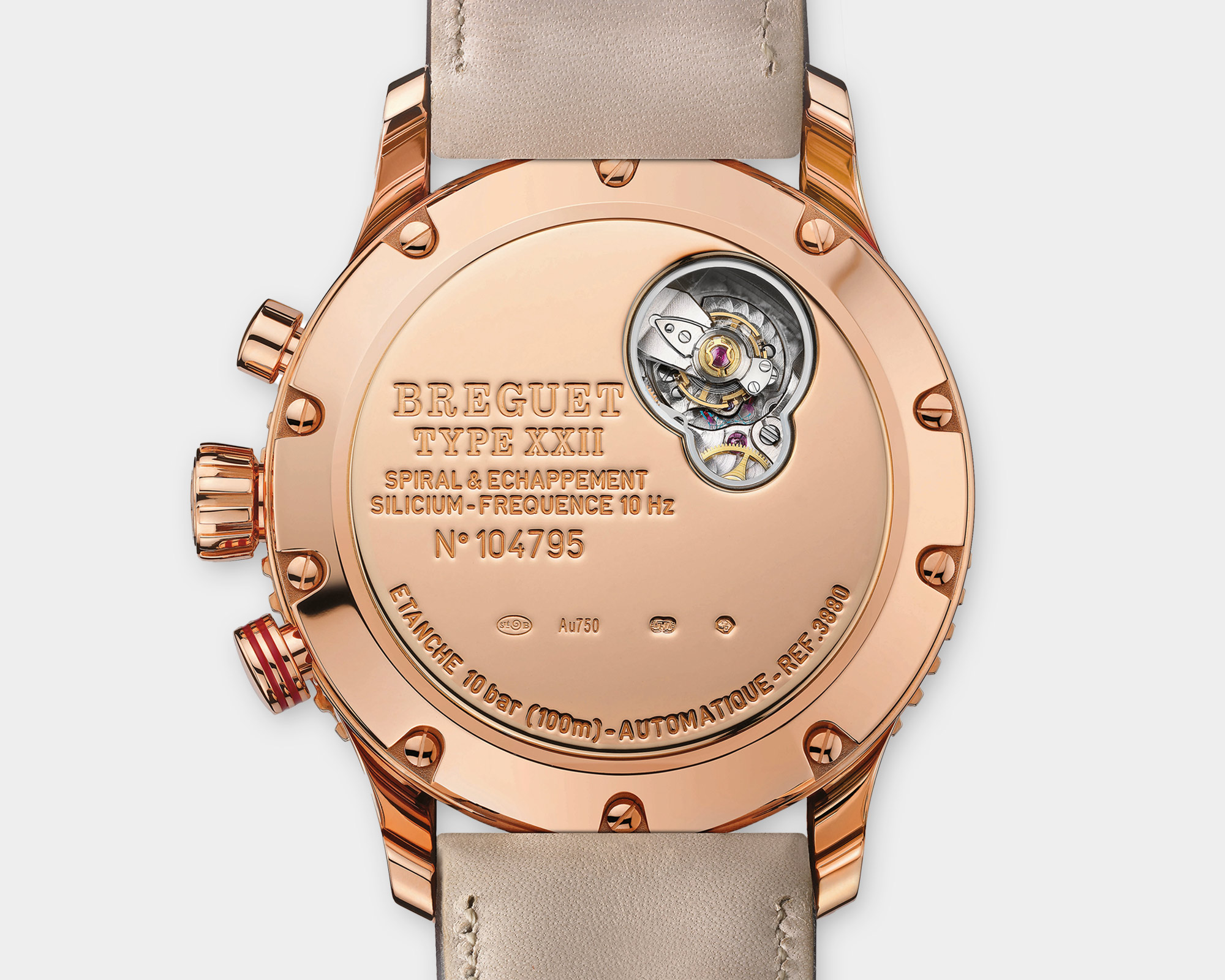
Type XXII 3880 Roségold
2012: Breguet Type XXI 3810 in titanium
In 2012, the manufacture presented the new Type XXI. For the first time, it consisted of a 42 mm case made of grade 2 titanium. On the reference 3810TI, the rotating bezel with numerals in relief is black. The original second-generation Type XX models, which were produced between 1970 and 1984, inspired the design. As with the Type XXI 3810 models from 2004, both the chronograph stop-seconds and the minute counter’s hand rotate from the centre. In addition to the chronograph displays, this Type XXI features a 24-hour display at 3 o’clock and a stop-hours display at 6 o’clock. The latter also integrates a trapezoidal date window. There are also Arabic numerals and applied indices with luminous material. Meanwhile, the automatic Breguet calibre 584Q/1, which is, of course, equipped with a flyback function, is at work inside.
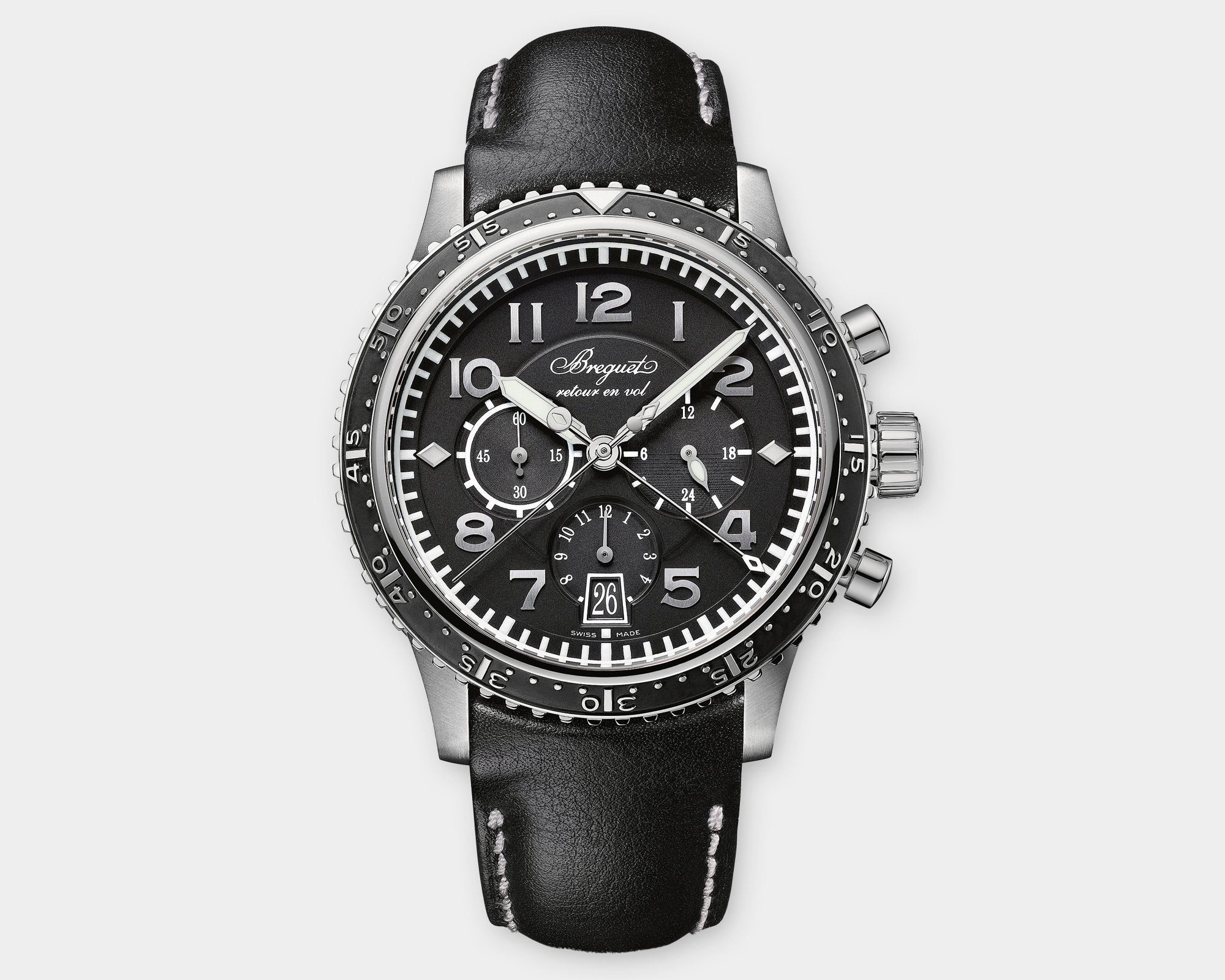
Type XX 3810TI
In 2015, a unique Type XXI in platinum with the reference 3813PT was up for grabs at the Only Watch charity auction.
2018: Breguet Type XXI 3817 – The end of the third generation
The Type XXI 3817 was unveiled at Baselworld in 2016, appeared in sales catalogues from 2018, and is the latest interpretation of the military model. The design of the 3817 is inspired by the aforementioned Breguet Only Watch 2015 (Breguet Type XXI 3813), a special edition with a platinum case. However, the series-produced Breguet Type XXI 3817 has a 42 mm steel or rose gold case. The slate grey dial with faux-patina numerals remains the same. The minutes and seconds of the chronograph are also displayed from the centre of this model, improving the legibility.
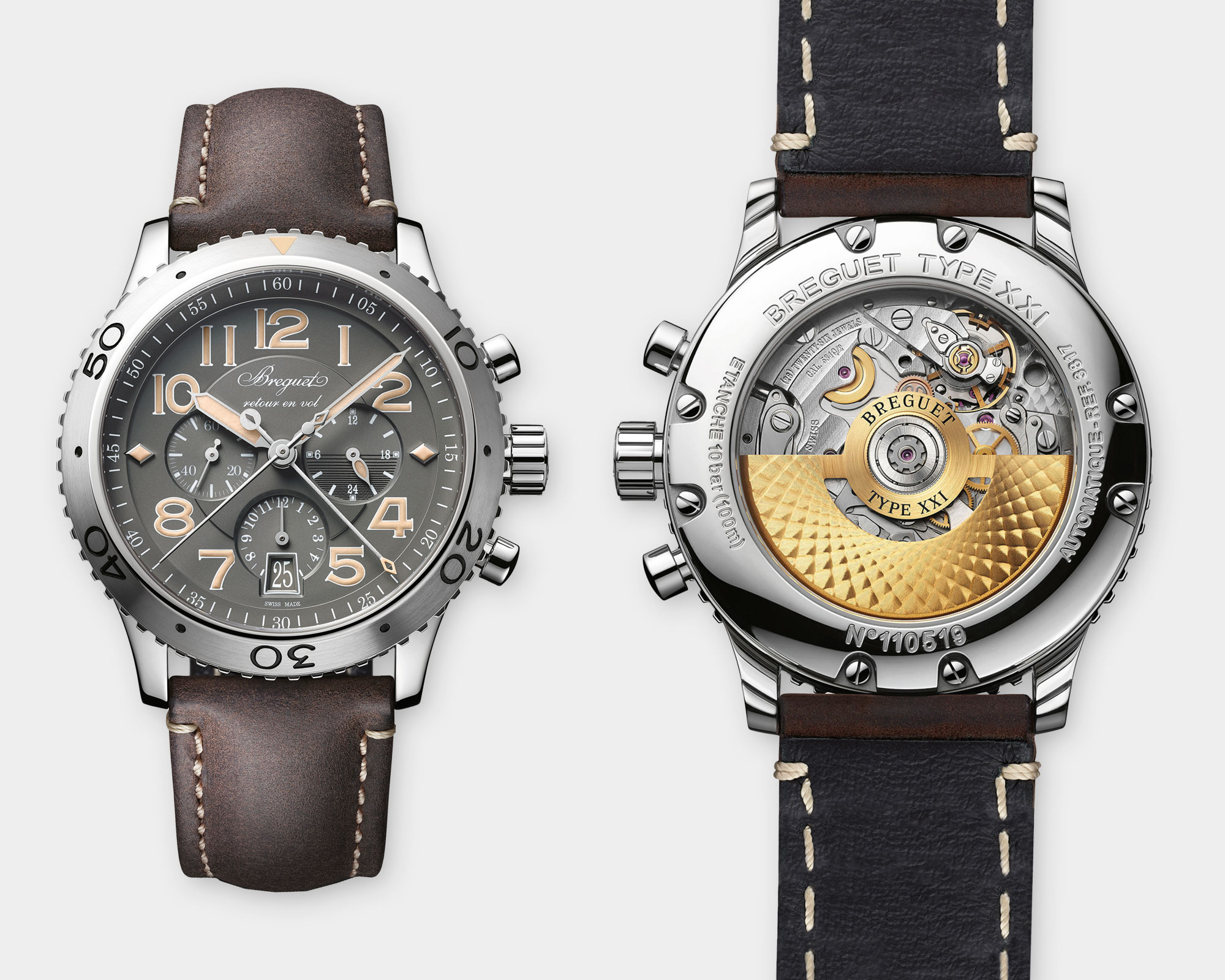
Type XXI 3817ST
In addition to the small seconds at 3 o’clock, there is a day/night indicator at 3 o’clock and a 12-hour counter at 6 o’clock. The latter also includes a date window with a date disc that matches the grey of the dial. The case houses the calibre 584Q/2, visible through the sapphire crystal case back and perfectly setting off the solid gold oscillating weight. Furthermore, it features an integrated flyback chronograph that switches by means of a slide control. Breguet does not provide the Type XXI 3817 with a column wheel. However, the power reserve is a solid 48 hours, and a silicon balance spring is also on board. This watch is accompanied by a brown vintage-look leather strap.
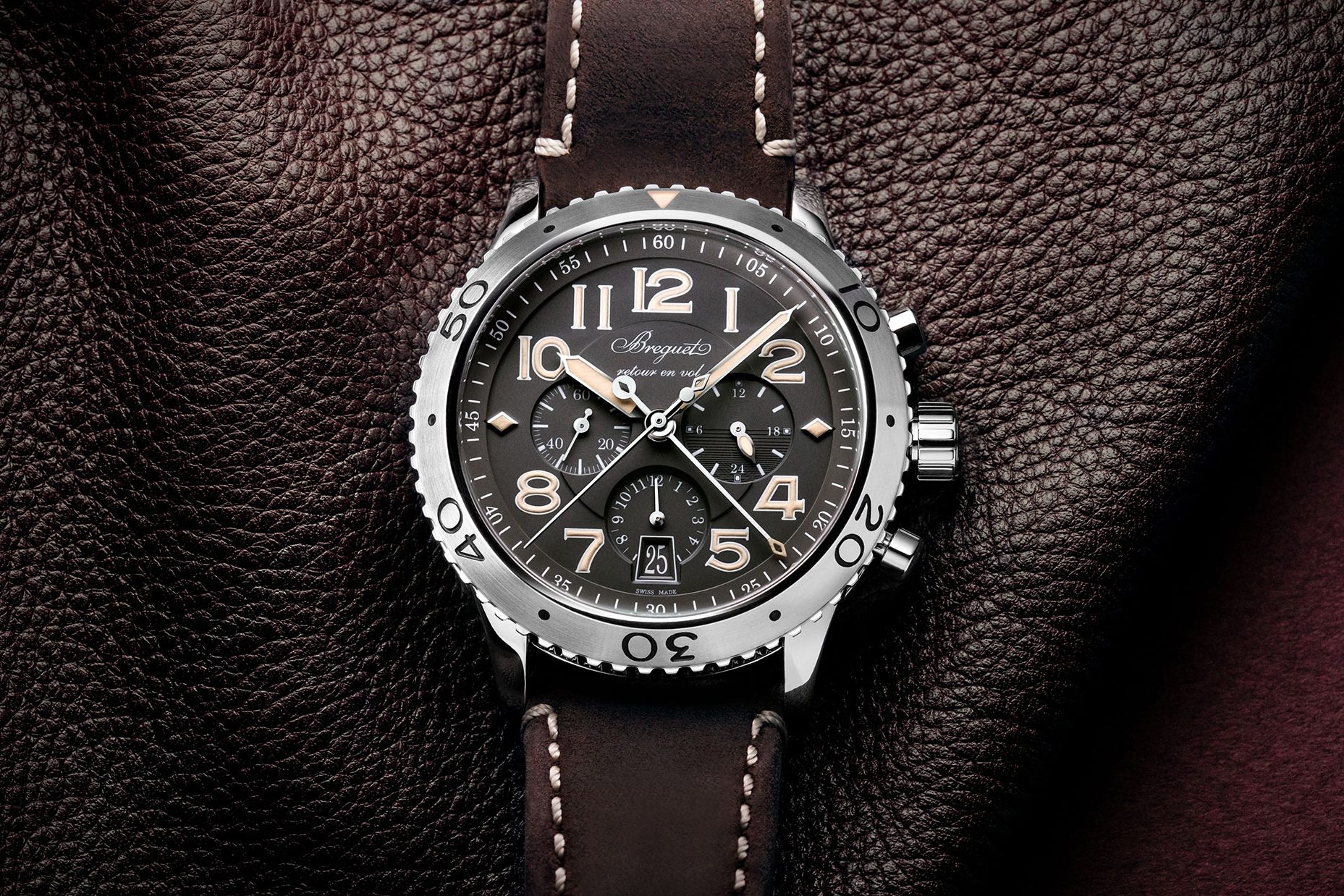
In 2021, the titanium version from 2012 reappeared with a bit of a face lift. The reference 3815TI with sapphire crystal caseback was limited to 500 pieces. 250 of them are equipped with green luminescent numerals, indexes and hands and the other half of the edition bears an orange-coloured luminescent coating. A unique feature is the fifth of a second scale on the dial, which alludes to the military Type 20 models of the 1950s.
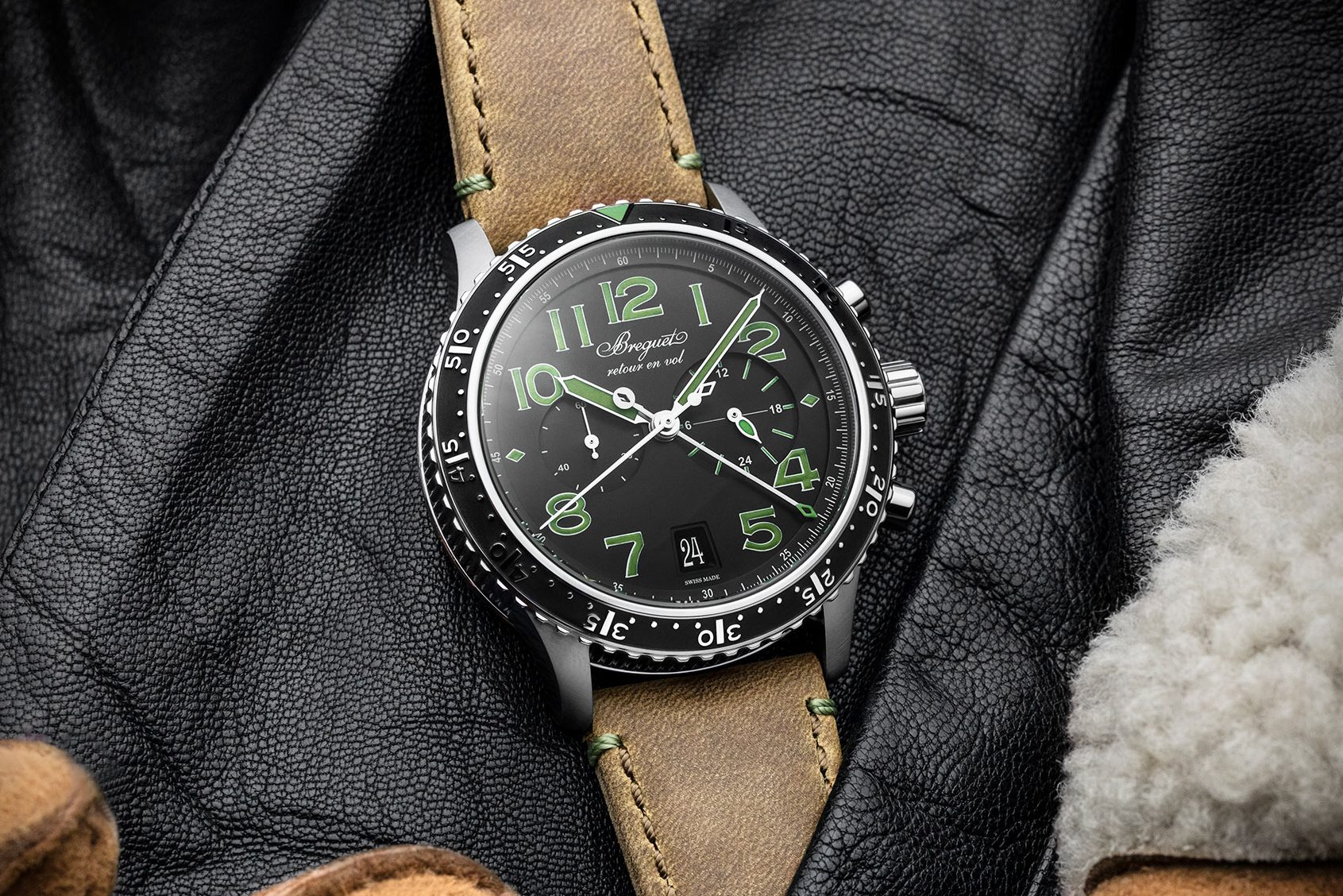
Type XXI 3815TI
2023: The new and fourth generation
Lionel a Marca, the CEO of Breguet, recently described the watchmaking company with the words: ‘A future-looking house that draws inspiration from its rich heritage.’ And so, for the new edition of the pilot’s watches, the company dug deep into the archives and brought together the best of 70 years of military and civilian Type 20 and Type XX models with state-of-the-art technology. After four years of development, Breguet is presenting the Type 20 Chronographe 2057 and the Type XX Chronographe 2067 this year. As the model names suggest, they draw inspiration from both the military and civilian models.
The Type 20 Chronographe 2057 design is strongly reminiscent of the military watches commissioned by the French Air Ministry in 1954. The 42 mm case is made of stainless steel. It is fitted with an unengraved, bidirectional fluted bezel resembling the style of the original. The pear-shaped crown is vintage in its aesthetic, and there is an oversized 30-minute counter at 3 o’clock. In comparison, the Type XX Chronographe 2067 has a 15-minute counter at 3 o’clock and an additional 12-hour counter at 6 o’clock.
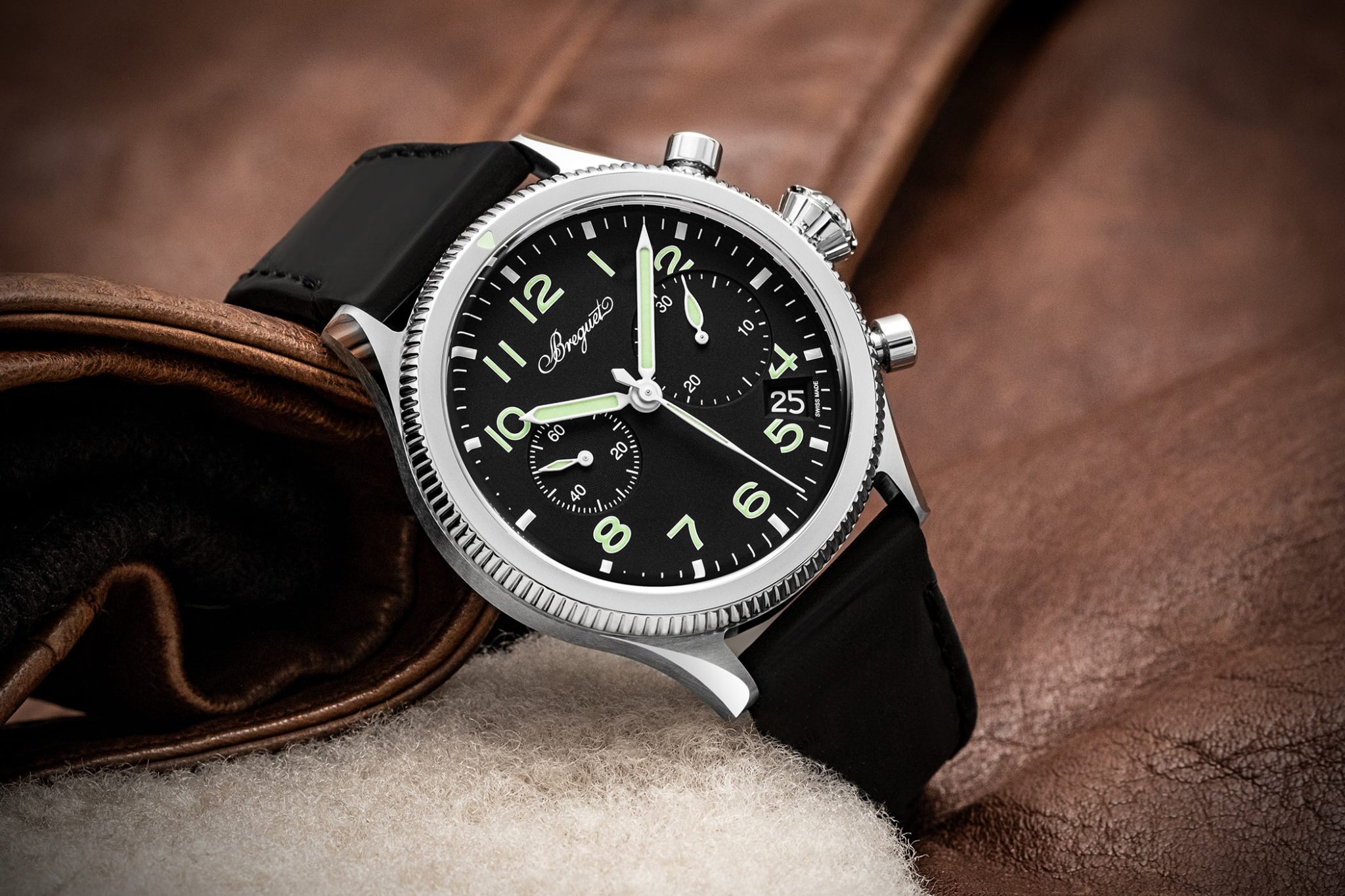
Both models feature an integrated date display between 4 and 5 o’clock, a first for Breguet’s pilot’s watches, as the date was previously positioned at 6 o’clock. During our conversation, CEO Marca explained: ‘We thought that the best place for the date was between the 4 and 5 o’clock position. With the 3 counters, this was the only place where you wouldn’t lose any information by opening a date window. At the 6 o’clock position, you would have lost the information of the 12-hour counter. Let’s not forget that the Type XX is first and foremost a chronograph, so readability should not be compromised.’
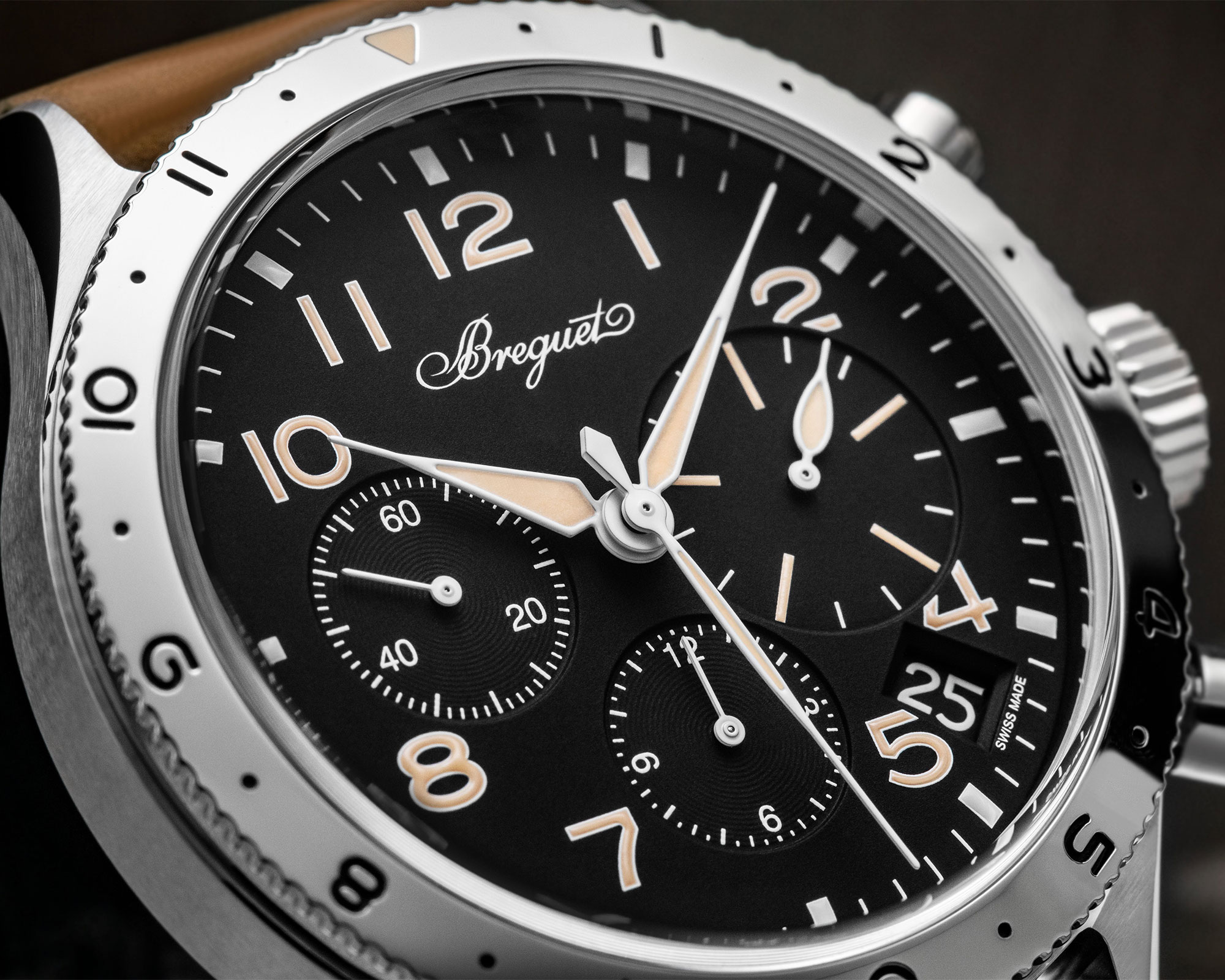
New manufacture chronograph movement
Breguet has developed an entirely in-house produced and fully integrated chronograph movement for its new pilot’s watches. At the heart of the Type XX Chronographe 2067 beats the calibre 728, while the centrepiece of the Type 20 Chronographe 2057 is the calibre 7281. It took Breguet four years to develop the movements and ensure that they could present a robust, fully integrated chronograph movement with state-of-the-art technology. Calibres 728 and 7281 feature a column wheel and an ingenious vertical clutch mechanism, enabling a pleasant and smooth use of the chronograph. The balance spring and escapement are made of silicon and are, therefore, anti-magnetic. For Lionel a Marca and his team, a long power reserve was also essential: ‘I wanted the owner of the watch to be able to put it on his bedside table on Friday evening and put it on again on Monday without having to reset it. We have mastered this challenge, because our chronograph has a power reserve of over 60 hours.’ Further details on the new models can be found here.

The future of Breguet’s pilot watches
Breguet set the standard for military pilot’s watch chronographs in the 1950s and became an indispensable partner for many public and private institutions. Today, Breguet sets the standard for high-quality modern timepieces for chronograph and pilot’s watch enthusiasts. Lionel a Marca has already announced its intention to expand the new Type XX generation with additional models, sizes, and materials. This guide shows that the pilot’s watch history found in the archives is vast and the watch company will, and indeed must, carry this expertise into the bright future that lies ahead.
